Causes Gallbladder Infection: Cholecystitis – Symptoms and Causes
What are the causes of gallbladder infection? What are the symptoms and causes of cholecystitis? How is acute cholecystitis treated?..
Gallbladder Infection: Cholecystitis – Overview
Acute cholecystitis is inflammation of the gallbladder that occurs due to occlusion of the cystic duct or impaired emptying of the gallbladder. Often this impaired emptying is due to stones or biliary sludge. Acute cholecystitis can be a serious condition, potentially leading to perforation of the gallbladder, sepsis, and even death if left untreated.
Causes of Acute Cholecystitis
The primary cause of acute cholecystitis is blockage of the cystic duct, which prevents the normal flow of bile from the gallbladder. This can be due to gallstones or biliary sludge. About 95% of cases of acute cholecystitis involve the presence of gallstones. However, not all gallstones lead to cholecystitis – it’s estimated that only 20% of patients with asymptomatic gallstones will develop symptoms within 20 years.
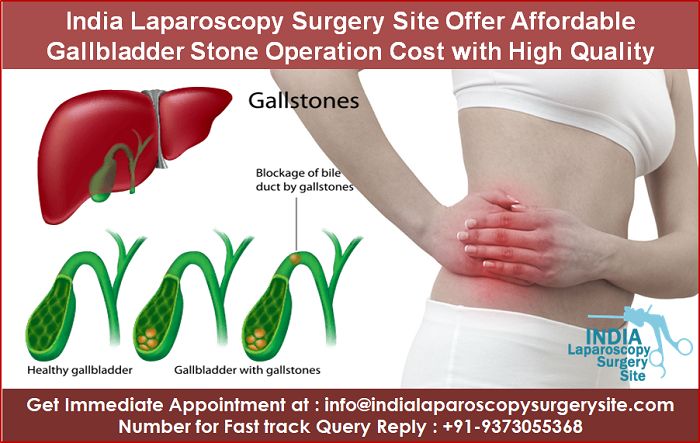
Other potential causes of cystic duct blockage include tumors, strictures, or external compression of the duct. Conditions that increase the risk of gallstone formation, such as obesity, rapid weight loss, pregnancy, and sickle cell disease, can also predispose patients to developing acute cholecystitis.
Symptoms of Acute Cholecystitis
The classic presentation of acute cholecystitis includes right upper quadrant abdominal pain, often radiating to the back or right shoulder. The pain is typically severe and may be associated with nausea, vomiting, and fever. Patients may also have a positive Murphy’s sign, where deep palpation of the right upper quadrant elicits pain and respiratory arrest.
Other symptoms can include jaundice, chills, and leukocytosis. It’s important to differentiate acute cholecystitis from other conditions like peptic ulcer disease, irritable bowel syndrome, and cardiac disease, which can have similar presentations.
Diagnosing Acute Cholecystitis
The diagnosis of acute cholecystitis is primarily based on the patient’s history and physical exam. Imaging studies, such as abdominal ultrasound, can help confirm the presence of gallstones and gallbladder wall thickening or pericholecystic fluid. Laboratory tests may show elevated white blood cell count, bilirubin, and liver enzymes.

If the diagnosis is uncertain, advanced imaging like CT or HIDA scan may be performed to further evaluate the gallbladder and biliary system.
Management of Acute Cholecystitis
The mainstay of treatment for acute cholecystitis is surgical removal of the gallbladder (cholecystectomy). This is typically performed laparoscopically, which is less invasive than open surgery. In some cases, especially in high-risk patients, conservative management with antibiotics and supportive care may be necessary initially, with delayed cholecystectomy performed once the acute inflammation has subsided.
Patients with severe complications like gallbladder perforation or gangrene may require more urgent surgical intervention. The interprofessional team, including surgeons, gastroenterologists, nurses, and pharmacists, plays a crucial role in the proper management of acute cholecystitis to ensure the best possible outcome for the patient.
Preventing Acute Cholecystitis
While acute cholecystitis cannot always be prevented, certain measures can help reduce the risk. Maintaining a healthy weight, avoiding rapid weight loss, and managing conditions like diabetes and sickle cell disease can help lower the chances of developing gallstones and subsequent cholecystitis. In some cases, prophylactic cholecystectomy may be recommended for patients with asymptomatic gallstones who are at high risk of complications.

Conclusion
Acute cholecystitis is a serious condition that requires prompt recognition and management to prevent potentially life-threatening complications. Understanding the underlying causes, typical presentation, and appropriate treatment strategies is crucial for healthcare providers to ensure the best possible outcomes for patients with this condition.
Acute Cholecystitis – StatPearls – NCBI Bookshelf
Continuing Education Activity
Acute cholecystitis is inflammation of the gallbladder that occurs due to occlusion of the cystic duct or impaired emptying of the gallbladder. Often this impaired emptying is due to stones or biliary sludge. This activity reviews the evaluation and management of acute cholecystitis and reviews the role of the interprofessional team in caring for patients with this condition.
Objectives:
Identify the risk factors for acute cholecystitis.
Describe the classic presentation for a patient with acute cholecystitis.
Explain the management of acute cholecystitis.
Explain how to improve patient outcomes by employing a well-integrated team approach to the management of patients with acute cholecystitis.
Access free multiple choice questions on this topic.
Introduction
Acute cholecystitis refers to inflammation of the gallbladder. The pathophysiologic mechanism of acute cholecystitis is blockage of the cystic duct. Cholecystitis is a condition best treated with surgery; however, it can be treated conservatively if necessary. This condition can be associated with or without the presence of gallstones and can also be classified as acute or chronic. It is found both in men and women but may have a propensity for certain populations. It may also present with certain classic signs and symptoms. Acute cholecystitis may also be confused with other illnesses such as peptic ulcer disease, irritable bowel disease, and cardiac disease. Chronic and acute pancreatitis can also mimic gallbladder disease.[1][2][3]
The pathophysiologic mechanism of acute cholecystitis is blockage of the cystic duct. Cholecystitis is a condition best treated with surgery; however, it can be treated conservatively if necessary. This condition can be associated with or without the presence of gallstones and can also be classified as acute or chronic. It is found both in men and women but may have a propensity for certain populations. It may also present with certain classic signs and symptoms. Acute cholecystitis may also be confused with other illnesses such as peptic ulcer disease, irritable bowel disease, and cardiac disease. Chronic and acute pancreatitis can also mimic gallbladder disease.[1][2][3]
Etiology
The etiology of acute cholecystitis is, by definition, cystic duct blockage, which causes inflammation. Normally, bile is made in the liver and travels down the bile duct, and is stored in the gallbladder. After eating certain foods, especially spicy or greasy foods, the gallbladder is stimulated to empty the bile of the gallbladder, through the cystic duct, down the bile duct into the duodenum. This process aids in food digestion.
This process aids in food digestion.
The gallbladder not only stores the bile, but it also can concentrate it. Concentrated bile is susceptible to precipitation forming stones when homeostasis is disrupted, which can occur due to bile stasis, supersaturation from the liver of cholesterol and lipids, disruption in the concentration process, and cholesterol crystal nucleation.
When cystic duct blockage is caused by a stone, it is called acute calculous cholecystitis. It is important to know, one can have pain due to temporary obstruction by gallstones, and that is called biliary colic. The diagnosis of biliary colic is upgraded to acute calculous cholecystitis if the pain does not resolve in six hours. If no stone is identified, it is called acute acalculous cholecystitis.[4][5]
Regardless of the cause of the blockage, the gallbladder wall edema will eventually cause wall ischemia and become gangrenous. The gangrenous gallbladder can become infected by gas-forming organisms, causing acute emphysematous cholecystitis; all of these conditions can quickly become life-threatening, and rupture has a high rate of mortality.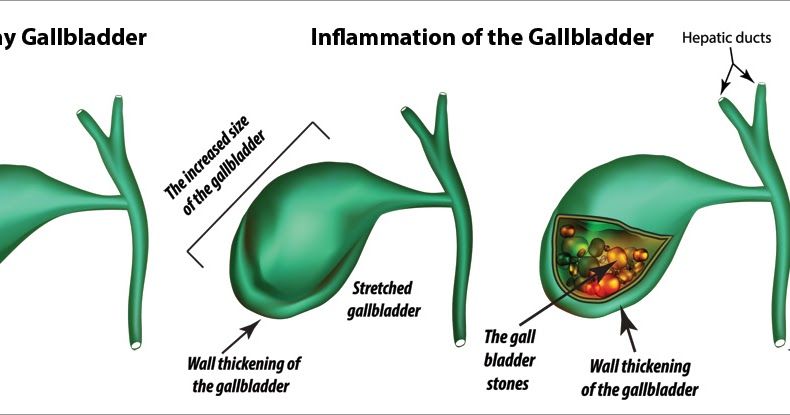
About 95% of people with acute cholecystitis have gallstones. [6] However that does not mean incidental findings of gallstone should be treated, as it is estimated that only 20% of patients with asymptomatic stones will develop symptoms within 20 years[7], and because approximately 1% of patients with asymptomatic stones develop complications of their stones before the onset of symptoms, prophylactic cholecystectomy is not warranted in asymptomatic patients.
Epidemiology
Gallbladder disease occurs in men and women, with certain populations being more prone to it. The risk of gallbladder disease increases in women, obese patients, pregnant women, and patients in their 40s. Drastic weight loss or acute illnesses may also increase the risk. The formation of gallstones and this condition can run in families. Other conditions that cause the breakdown of blood cells, for example, sickle cell disease, also increase the incidence of gallstones.
Pathophysiology
Occlusion of the cystic duct or malfunction of the mechanics of gallbladder emptying is the pathophysiology of this disease. Cases of acute untreated cholecystitis could lead to perforation of the gallbladder, sepsis, and death. Gallstones form from various materials such as bilirubinate or cholesterol. These materials increase the likelihood of cholecystitis and cholelithiasis in conditions such as sickle cell disease where red blood cells are broken down forming excess bilirubin and forming pigmented stones. Patients with excessive calcium such as in hyperparathyroidism can form calcium stones. Patients with excessive cholesterol can form cholesterol stones. Occlusion of the common bile duct such as in neoplasms or strictures can also lead to stasis of the bile flow causing gallstone formation.[8][9]
Cases of acute untreated cholecystitis could lead to perforation of the gallbladder, sepsis, and death. Gallstones form from various materials such as bilirubinate or cholesterol. These materials increase the likelihood of cholecystitis and cholelithiasis in conditions such as sickle cell disease where red blood cells are broken down forming excess bilirubin and forming pigmented stones. Patients with excessive calcium such as in hyperparathyroidism can form calcium stones. Patients with excessive cholesterol can form cholesterol stones. Occlusion of the common bile duct such as in neoplasms or strictures can also lead to stasis of the bile flow causing gallstone formation.[8][9]
Histopathology
During the early phase, the gallbladder will usually reveal extensive venous congestion and edema. With time, fibrosis and the presence of chronic inflammatory cells may appear. More advanced cases may present with perforation or gangrene.
History and Physical
Cases of chronic cholecystitis present with progressing right upper quadrant abdominal pain with bloating, food intolerances (especially greasy and spicy foods), increased gas, nausea, and vomiting.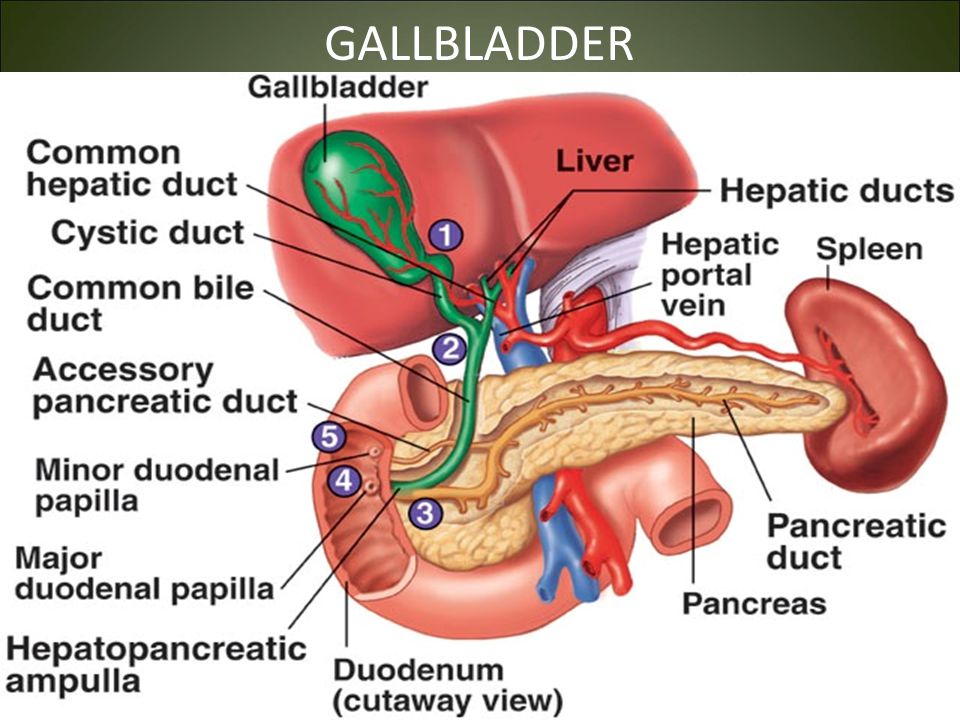 Pain in the midback or shoulder may also occur. This pain could be present for years until diagnosis. Cases of acute cholecystitis have similar symptoms only more severe. Often symptoms are mistaken for cardiac issues. The finding of right upper abdominal pain with deep palpation, Murphy sign, is usually classic for this disease. Often, there is a specific dietary event leading to the acute attack, e.g., “I ate pork chops and gravy last night.”
Pain in the midback or shoulder may also occur. This pain could be present for years until diagnosis. Cases of acute cholecystitis have similar symptoms only more severe. Often symptoms are mistaken for cardiac issues. The finding of right upper abdominal pain with deep palpation, Murphy sign, is usually classic for this disease. Often, there is a specific dietary event leading to the acute attack, e.g., “I ate pork chops and gravy last night.”
Evaluation
A physical exam with a comprehensive history is paramount in making the diagnosis of cholecystitis. A complete blood count (CBC) and a comprehensive metabolic panel are also important. In cases of chronic cholecystitis, these results may be normal. In acute cholecystitis or severe disease, white blood cell count (WBC) may be elevated. Liver enzymes may also be elevated. If there is a high bilirubin level above 2, then consider a possible common bile duct stone. Note that even in the presence of severe gallbladder disease, lab values may be normal.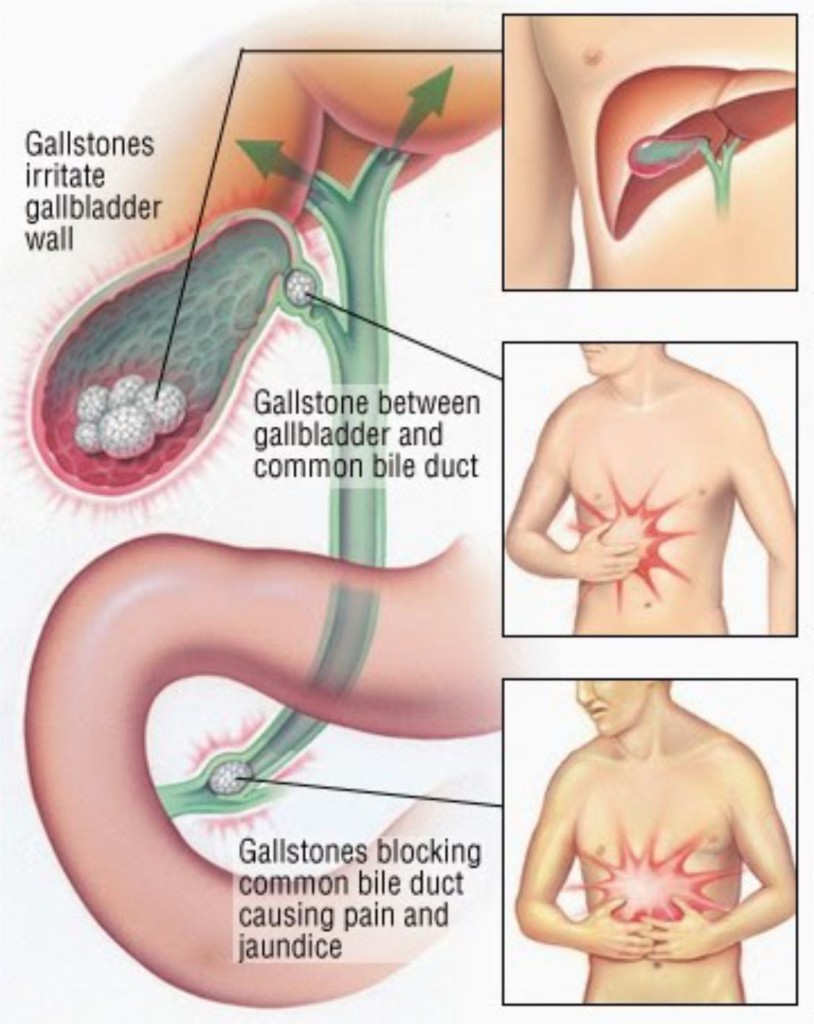 Amylase and lipase must also be checked to rule out pancreatitis. Often a CT scan is ordered in the emergency department as the first test in the workup. Findings of cholecystitis and gallstones can often be seen in this imaging. A gallbladder ultrasound is the best test to evaluate gallbladder disease initially. A thickened gallbladder wall and gallstones are common findings with this condition. In cases of acute cholecystitis, a hepatobiliary (HIDA) scan is recommended. This scan will diagnose gallbladder function or cystic duct obstruction. The addition of cholecystokinin (CCK) in cases of no gallstones may also diagnose acalculous cholecystitis. This is indicated by an ejection fracture of less than 35%.[10][11]
Amylase and lipase must also be checked to rule out pancreatitis. Often a CT scan is ordered in the emergency department as the first test in the workup. Findings of cholecystitis and gallstones can often be seen in this imaging. A gallbladder ultrasound is the best test to evaluate gallbladder disease initially. A thickened gallbladder wall and gallstones are common findings with this condition. In cases of acute cholecystitis, a hepatobiliary (HIDA) scan is recommended. This scan will diagnose gallbladder function or cystic duct obstruction. The addition of cholecystokinin (CCK) in cases of no gallstones may also diagnose acalculous cholecystitis. This is indicated by an ejection fracture of less than 35%.[10][11]
Treatment / Management
The most appropriate management of cholecystitis is laparoscopic cholecystectomy. There are low morbidity and mortality rates with quick recovery. This can also be done with an open technique in cases where the patient is not a good laparoscopic candidate. In situations in which the patient is acutely ill and considered a poor surgical candidate, he or she may be treated with temporizing percutaneous drainage of the gallbladder. Milder cases of chronic cholecystitis in patients considered poor surgical candidates might be managed with low-fat and low-spice diets. The results of this treatment vary. Medical treatment of gallstones with ursodiol also has been reported to have occasional success.[12][13][3]
In situations in which the patient is acutely ill and considered a poor surgical candidate, he or she may be treated with temporizing percutaneous drainage of the gallbladder. Milder cases of chronic cholecystitis in patients considered poor surgical candidates might be managed with low-fat and low-spice diets. The results of this treatment vary. Medical treatment of gallstones with ursodiol also has been reported to have occasional success.[12][13][3]
Differential Diagnosis
Complications
The complications of acute cholecystitis include:
Biloma
Intraabdominal abscess
Bile duct injury
Hepatic injury
Small bowel injury
Infection
Retained stones in the bile duct
Bleeding
Postoperative and Rehabilitation Care
Once the gallbladder has been removed, most patients can be discharged on the same day.
The pain is minimal and can be managed by over-the-counter analgesics. The patient may complain of severe shoulder pain due to retained CO2 from laparoscopic insufflation and should be explained that such pain will dissipate as the patient moves and gas is slowly absorbed, which can take up to three days.
The patient may complain of severe shoulder pain due to retained CO2 from laparoscopic insufflation and should be explained that such pain will dissipate as the patient moves and gas is slowly absorbed, which can take up to three days.
Prior to discharge, the patient should be advised on possible intolerance to greasy food, which may cause bloating or diarrhea. This can be temporary or, at some degree permanent, due to the decreased speed of fat emulsification by the loss of stored bile in the gallbladder. Most patients will have an up-regulation in bile production by the liver and will see improvement in symptoms with time.
Follow-up time is between 3-4 weeks from operation.
Pearls and Other Issues
Cholecystitis can occur in the very young and very old, but the highest incidence is in the fourth decade. The classic mantra of “fat, forty, fertile, and flatulent” often applies. Food intolerances are usually the initiating factor of nausea, vomiting, and bloating, but as this condition progresses, there may be persistent symptoms even when the patient has not eaten. The preferred recommended treatment is the removal of the gallbladder. In the past, this was done through an open laparotomy incision. Now laparoscopic cholecystectomy is the procedure of choice. This procedure has low mortality and morbidity, a quick recovery time (usually one week), and good results. At times, patients present to the primary care practitioner with mild symptoms of cholecystitis and gallstones. This can present a challenge to the physician to know what is the appropriate treatment. Often conservative medical management is recommended. This would include low-fat diet modification and possible weight loss. Unfortunately, for surgeons, these patients often present to the emergency department with symptoms of acute cholecystitis and undergo urgent surgery. This situation also increases operative morbidity rates. Therefore, general surgeons usually recommend patients undergo elective laparoscopic cholecystectomy earlier than later in the course of the disease. Other considerations would be the passing of gallstones into the bile duct causing biliary obstruction and possible pancreatitis.
The preferred recommended treatment is the removal of the gallbladder. In the past, this was done through an open laparotomy incision. Now laparoscopic cholecystectomy is the procedure of choice. This procedure has low mortality and morbidity, a quick recovery time (usually one week), and good results. At times, patients present to the primary care practitioner with mild symptoms of cholecystitis and gallstones. This can present a challenge to the physician to know what is the appropriate treatment. Often conservative medical management is recommended. This would include low-fat diet modification and possible weight loss. Unfortunately, for surgeons, these patients often present to the emergency department with symptoms of acute cholecystitis and undergo urgent surgery. This situation also increases operative morbidity rates. Therefore, general surgeons usually recommend patients undergo elective laparoscopic cholecystectomy earlier than later in the course of the disease. Other considerations would be the passing of gallstones into the bile duct causing biliary obstruction and possible pancreatitis.
Enhancing Healthcare Team Outcomes
Managing acute cholecystitis is now routine, and most patients have an excellent prognosis. However, problems arise in patients with acalculous cholecystitis and when there are bile duct stones. Patients with acalculous cholecystitis are often managed in the intensive care unit and may undergo an initial aspiration procedure until they are fit to undergo formal surgery. Since many of these patients have high comorbidity, monitoring them is critical. Educating the patient and family is vital since the condition does carry a high mortality. The other group of patients who may have a prolonged stay are those with a bile duct stone. These patients require an ERCP prior to cholecystectomy. Again ERCP is not a benign procedure, and patients need to be educated about the procedure and potential complications.
Patients with numerous comorbid factors need to be evaluated by the cardiologist prior to general anesthesia. The preoperative nurse should ensure that the patient has the requisite clearance, ECG, chest x-ray, and blood work before the surgery. If there are any deficiencies or concerns, the surgeon should be contacted prior to the procedure.[14][15][16] (Level V) After the procedure, the nurse will monitor vital signs and assist in managing the patient’s pain. If there is any significant change in vital signs or the pain cannot be controlled with the medications provided, the surgeon should be consulted. Pre-operatively, the pharmacist should access the patient’s medications and make sure that there is no concern for withdrawal or potential interaction with the anesthetics. The clinical team should be apprised if there are any concerns.
If there are any deficiencies or concerns, the surgeon should be contacted prior to the procedure.[14][15][16] (Level V) After the procedure, the nurse will monitor vital signs and assist in managing the patient’s pain. If there is any significant change in vital signs or the pain cannot be controlled with the medications provided, the surgeon should be consulted. Pre-operatively, the pharmacist should access the patient’s medications and make sure that there is no concern for withdrawal or potential interaction with the anesthetics. The clinical team should be apprised if there are any concerns.
Outcomes
For patients with uncomplicated acute cholecystitis, the prognosis is excellent. The mortality rates are very low. Perforation or gangrene of the gallbladder may occur in delayed cases. Patients with acalculous cholecystitis have high mortality varying from 20-50%.
In severe cases of acute cholecystitis, the intense inflammation can make surgery difficult, resulting in injury to the bile duct, which has substantial morbidity.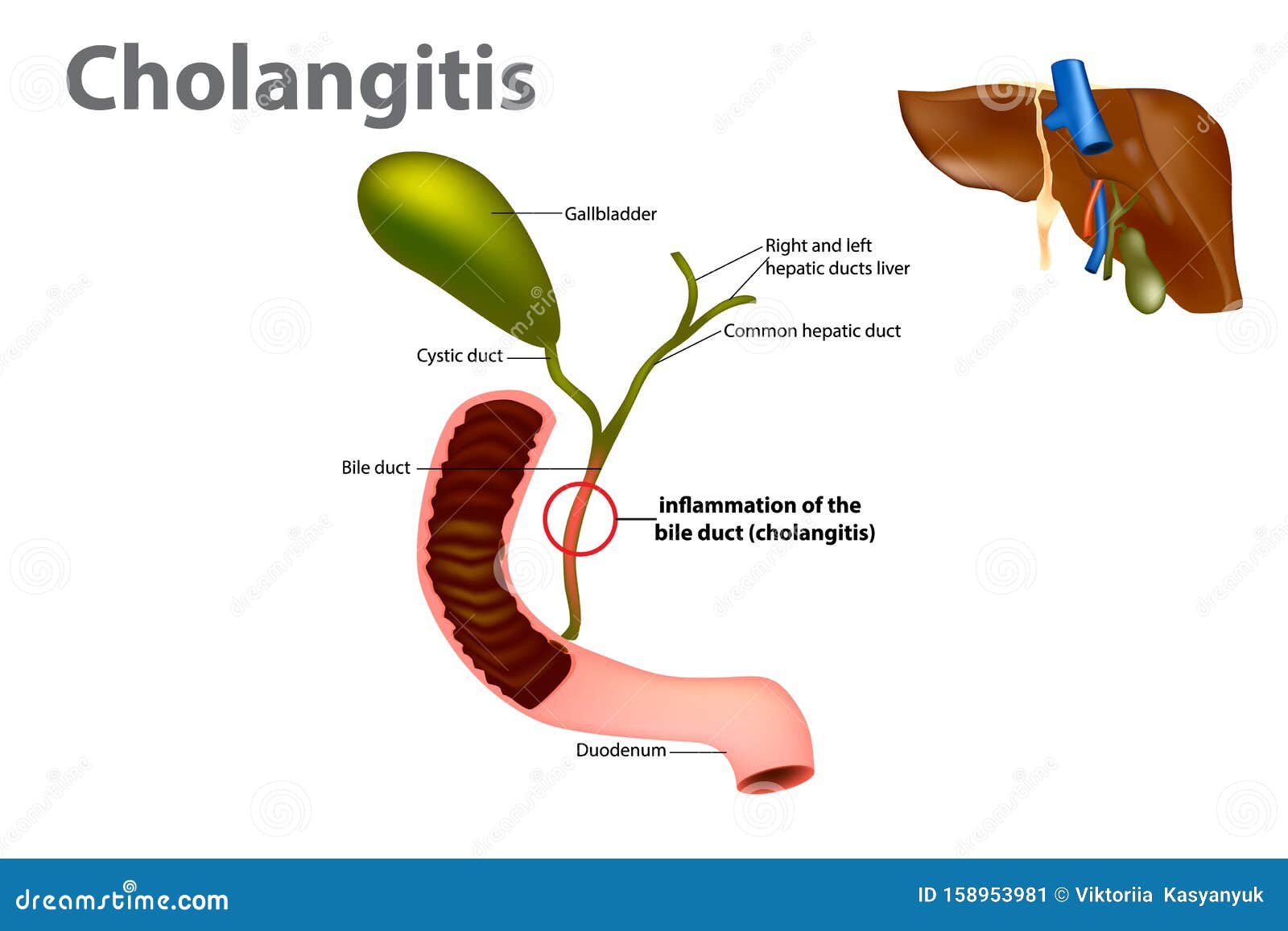 [17][18] [Level 5]
[17][18] [Level 5]
Review Questions
Access free multiple choice questions on this topic.
Comment on this article.
Figure
Axial CT abdomen Acute cholecystitis. Contributed by Scott Dulebohn, M.D.
Figure
CT Abdomen Acute Cholecystitis. Contributed by Scott Dulebohn, MD
Figure
Figure 1. 37-year old female diagnosed as gallstones with acute cholecystitis. The incidental findings ; a: US image show multiple hypoechoic lesions, some of them with comet-tail artifacts, raises the possibility of multiple biliary hamartoma; b: T2-weighted (more…)
Figure
Acalculous cholecystitis. Image courtesy Dr Chaigasame
Figure
Cholecystitis. Calculous cholecystitis with a thickened gallbladder wall, large gallstone in the neck, sludge in the gallbladder. Contributed from the European Society of Radiology: Centro Hospitalar do Algarve – Faro/PT
References
- 1.
Burmeister G, Hinz S, Schafmayer C.
 [Acute Cholecystitis]. Zentralbl Chir. 2018 Aug;143(4):392-399. [PubMed: 30134498]
[Acute Cholecystitis]. Zentralbl Chir. 2018 Aug;143(4):392-399. [PubMed: 30134498]- 2.
Walsh K, Goutos I, Dheansa B. Acute Acalculous Cholecystitis in Burns: A Review. J Burn Care Res. 2018 Aug 17;39(5):724-728. [PubMed: 29931066]
- 3.
Kohga A, Suzuki K, Okumura T, Yamashita K, Isogaki J, Kawabe A, Kimura T. Is postponed laparoscopic cholecystectomy justified for acute cholecystitis appearing early after onset? Asian J Endosc Surg. 2019 Jan;12(1):69-73. [PubMed: 29577610]
- 4.
Yun SP, Seo HI. Clinical aspects of bile culture in patients undergoing laparoscopic cholecystectomy. Medicine (Baltimore). 2018 Jun;97(26):e11234. [PMC free article: PMC6039604] [PubMed: 29952986]
- 5.
Wilkins T, Agabin E, Varghese J, Talukder A. Gallbladder Dysfunction: Cholecystitis, Choledocholithiasis, Cholangitis, and Biliary Dyskinesia. Prim Care. 2017 Dec;44(4):575-597. [PubMed: 29132521]
- 6.
Halpin V.
 Acute cholecystitis. BMJ Clin Evid. 2014 Aug 20;2014 [PMC free article: PMC4140413] [PubMed: 25144428]
Acute cholecystitis. BMJ Clin Evid. 2014 Aug 20;2014 [PMC free article: PMC4140413] [PubMed: 25144428]- 7.
Behari A, Kapoor VK. Asymptomatic Gallstones (AsGS) – To Treat or Not to? Indian J Surg. 2012 Feb;74(1):4-12. [PMC free article: PMC3259178] [PubMed: 23372301]
- 8.
Apolo Romero EX, Gálvez Salazar PF, Estrada Chandi JA, González Andrade F, Molina Proaño GA, Mesías Andrade FC, Cadena Baquero JC. Gallbladder duplication and cholecystitis. J Surg Case Rep. 2018 Jul;2018(7):rjy158. [PMC free article: PMC6030904] [PubMed: 29992010]
- 9.
Sureka B, Rastogi A, Mukund A, Thapar S, Bhadoria AS, Chattopadhyay TK. Gangrenous cholecystitis: Analysis of imaging findings in histopathologically confirmed cases. Indian J Radiol Imaging. 2018 Jan-Mar;28(1):49-54. [PMC free article: PMC5894319] [PubMed: 29692527]
- 10.
Tootian Tourghabe J, Arabikhan HR, Alamdaran A, Zamani Moghadam H. Emergency Medicine Resident versus Radiologist in Detecting the Ultrasonographic Signs of Acute Cholecystitis; a Diagnostic Accuracy Study.
 Emerg (Tehran). 2018;6(1):e19. [PMC free article: PMC6036519] [PubMed: 30009221]
Emerg (Tehran). 2018;6(1):e19. [PMC free article: PMC6036519] [PubMed: 30009221]- 11.
Joshi G, Crawford KA, Hanna TN, Herr KD, Dahiya N, Menias CO. US of Right Upper Quadrant Pain in the Emergency Department: Diagnosing beyond Gallbladder and Biliary Disease. Radiographics. 2018 May-Jun;38(3):766-793. [PubMed: 29757718]
- 12.
Thangavelu A, Rosenbaum S, Thangavelu D. Timing of Cholecystectomy in Acute Cholecystitis. J Emerg Med. 2018 Jun;54(6):892-897. [PubMed: 29752150]
- 13.
Ke CW, Wu SD. Comparison of Emergency Cholecystectomy with Delayed Cholecystectomy After Percutaneous Transhepatic Gallbladder Drainage in Patients with Moderate Acute Cholecystitis. J Laparoendosc Adv Surg Tech A. 2018 Jun;28(6):705-712. [PubMed: 29658839]
- 14.
Yeh DD, Chang Y, Tabrizi MB, Yu L, Cropano C, Fagenholz P, King DR, Kaafarani HMA, de Moya M, Velmahos G. Derivation and validation of a practical Bedside Score for the diagnosis of cholecystitis.
 Am J Emerg Med. 2019 Jan;37(1):61-66. [PubMed: 29724580]
Am J Emerg Med. 2019 Jan;37(1):61-66. [PubMed: 29724580]- 15.
Gulaya K, Desai SS, Sato K. Percutaneous Cholecystostomy: Evidence-Based Current Clinical Practice. Semin Intervent Radiol. 2016 Dec;33(4):291-296. [PMC free article: PMC5088094] [PubMed: 27904248]
- 16.
Bagla P, Sarria JC, Riall TS. Management of acute cholecystitis. Curr Opin Infect Dis. 2016 Oct;29(5):508-13. [PubMed: 27429137]
- 17.
Kohga A, Suzuki K, Okumura T, Yamashita K, Isogaki J, Kawabe A, Kimura T. Outcomes of early versus delayed laparoscopic cholecystectomy for acute cholecystitis performed at a single institution. Asian J Endosc Surg. 2019 Jan;12(1):74-80. [PubMed: 29611896]
- 18.
Ahmed O, Rogers AC, Bolger JC, Mastrosimone A, Lee MJ, Keeling AN, Cheriyan D, Robb WB. Meta-analysis of outcomes of endoscopic ultrasound-guided gallbladder drainage versus percutaneous cholecystostomy for the management of acute cholecystitis. Surg Endosc.
 2018 Apr;32(4):1627-1635. [PubMed: 29404731]
2018 Apr;32(4):1627-1635. [PubMed: 29404731]
Disclosure: Mark Jones declares no relevant financial relationships with ineligible companies.
Disclosure: Rafaella Genova declares no relevant financial relationships with ineligible companies.
Disclosure: Maria O’Rourke declares no relevant financial relationships with ineligible companies.
Chronic Cholecystitis: Causes, Symptoms & Diagnosis
What is chronic cholecystitis?
Cholecystitis is the sudden inflammation of your gallbladder. If this condition persists over time, such as for months, with repeated attacks, or if there are recurrent problems with gallbladder function, it’s known as chronic cholecystitis.
The gallbladder is a small, pear-shaped organ located on the underside of your liver. It stores bile made by the liver and sends it to the small intestine via the common bile duct (CBD) to aid in the digestion of fats. The CBD connects the liver, the gallbladder, and the pancreas to the small intestine. Gallstones blocking the CBD are the leading cause of cholecystitis. This blockage causes bile to build up in the gallbladder, and that buildup causes the gallbladder to become inflamed.
The CBD connects the liver, the gallbladder, and the pancreas to the small intestine. Gallstones blocking the CBD are the leading cause of cholecystitis. This blockage causes bile to build up in the gallbladder, and that buildup causes the gallbladder to become inflamed.
If this happens acutely in the face of chronic inflammation, it is a serious condition. The gallbladder could rupture if it’s not treated properly, and this is considered a medical emergency. Treatment usually involves antibiotics, pain medications, and removal of the gallbladder.
This condition usually begins with the formation of gallstones in the gallbladder. According to the Cleveland Clinic, whether you have gallstones may depend on several factors, including:
- genetic predisposition
- weight
- gallbladder activity
- dietary habits
Gallstones form when substances in the bile form crystal-like particles. They can range from the size of a grain of sand to the size of a golf ball.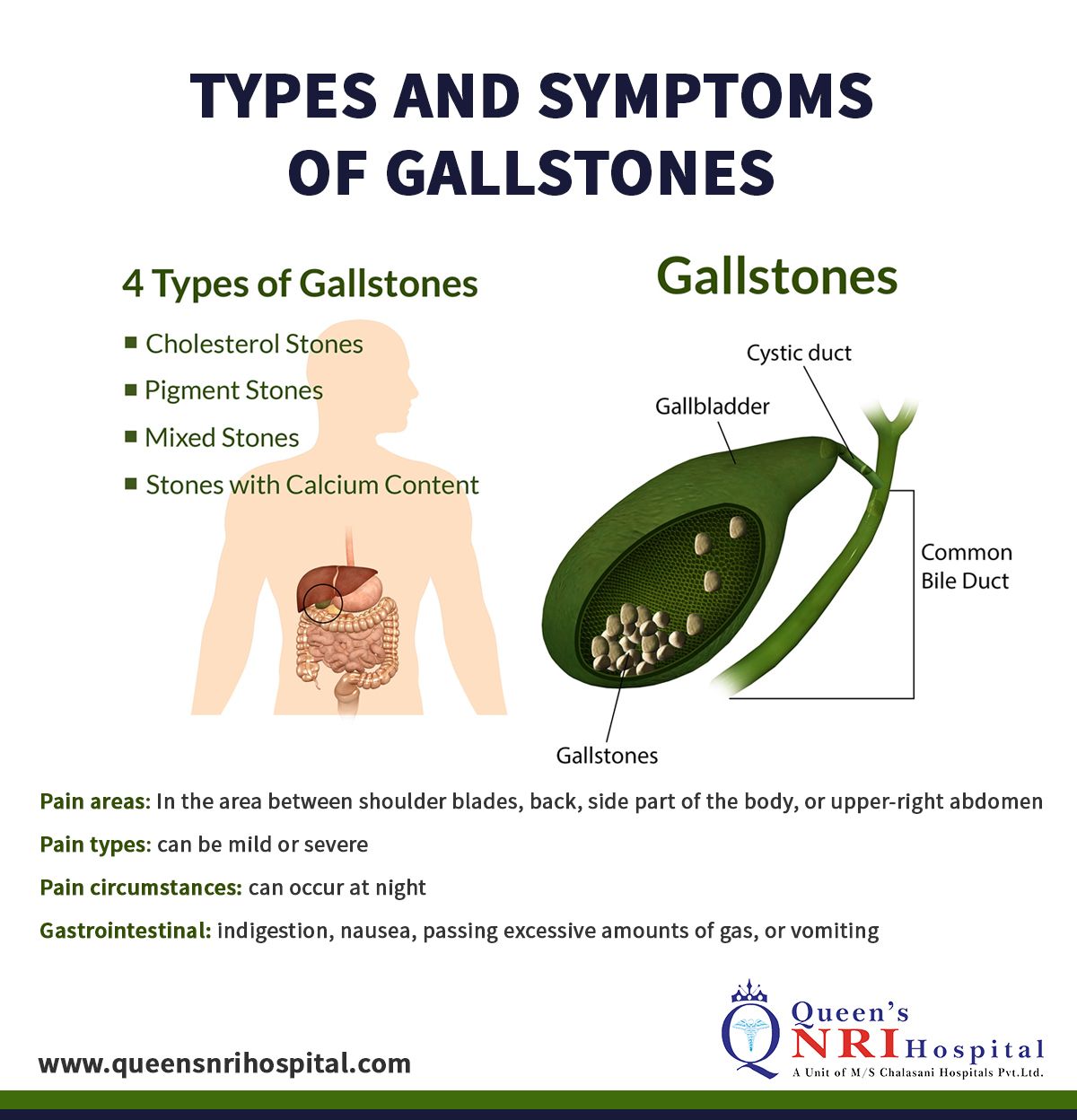 The presence of gallstones causes pressure, irritation, and may cause infection. The walls of the gallbladder begin to thicken over time. Eventually, the gallbladder starts to shrink. These changes make it harder for the gallbladder to function properly.
The presence of gallstones causes pressure, irritation, and may cause infection. The walls of the gallbladder begin to thicken over time. Eventually, the gallbladder starts to shrink. These changes make it harder for the gallbladder to function properly.
In addition to gallstones, cholecystitis can be due to:
- infection of the CBD drainage system
- a CBD blockage
- excess cholesterol in the gallbladder, which can happen during pregnancy or after rapid weight loss
- decreased blood supply to the gallbladder because of diabetes
- tumors in the liver or pancreas
- tumors in the gallbladder, which is rare
When you experience repeated or prolonged attacks of cholecystitis, it becomes a chronic condition.
A number of factors increase your chances of getting cholecystitis:
- Gallstones are more common in women than in men. This makes women more likely than men to develop cholecystitis.
- The changing of hormones can often cause it.
 Pregnant women or people on hormone therapy are at greater risk.
Pregnant women or people on hormone therapy are at greater risk. - The Cleveland Clinic states that the risk of developing this condition increases after age 40.
- Hispanics and Native Americans have a higher risk of developing gallstones than other people.
- People who are obese are also more likely to get this condition.
- Rapid weight loss or weight gain can bring upon the disorder.
- If you have diabetes, you are at risk of getting cholecystitis.
Symptoms of cholecystitis can appear suddenly or develop slowly over a period of years. Most of the time these symptoms appear after a meal that is high in fat.
Symptoms include:
- severe abdominal pains that may feel sharp or dull
- abdominal cramping and bloating
- pain that spreads to your back or below your right shoulder blade
- fever
- chills
- nausea
- vomiting
- loose, light-colored stools
- jaundice, which is when your skin and the whites of your eyes turn yellow
- itching
A typical attack can last two or three days, but symptoms of cholecystitis vary widely from person to person. The symptoms appear on the right or middle upper part of your stomach. The pain will usually last for 30 minutes.
The symptoms appear on the right or middle upper part of your stomach. The pain will usually last for 30 minutes.
Complications can include:
- pancreatitis, an inflammation of the pancreas
- perforation of the gallbladder as a result of infection
- enlarged gallbladder due to inflammation
- infection may cause the bile to build up
- cancer of the gallbladder (this is a rare, long-term complication)
- death of gallbladder tissue (this can lead to a tear and ultimately a burst of the organ)
The symptoms of cholecystitis can be treated at home with pain medication and rest, if you have been properly diagnosed. It’s important that you talk to your doctor first before making the decision to treat at home. You may also take antibiotics and avoid fatty foods.
You should always seek medical attention if you are getting severe pains in your abdomen or if your fever does not break.
Your doctor will take your medical history and conduct a physical exam. The symptoms of cholecystitis are similar to those of other conditions, so they must rule out those conditions.
The symptoms of cholecystitis are similar to those of other conditions, so they must rule out those conditions.
There are tests that can help diagnose cholecystitis:
- The CT scan uses X-rays to produce very detailed pictures of your abdomen. This is the most sensitive test, and is likely the best bet in locating the problem.
- Your doctor may use an abdominal ultrasound to view your gallbladder and liver. This will help them visualize stones and duct obstructions.
- Blood tests can identify infections in the bloodstream.
- In cholescintigraphy, or a HIDA scan, an injection of a small amount of radioactive material can help identify abnormal contractions or obstructions of your gallbladder and bile ducts. This is also an accurate method of locating the problem. It can take anywhere from an hour to four hours to get your results back.
- Endoscopic retrograde cholangiopancreatography involves using an endoscope (a long, flexible tube inserted down your throat), dye, and an X-ray to thoroughly examine your organs and find defects or problems.

- In a percutaneous transhepatic cholangiography, your doctor will insert contrast dye into your liver with a needle. This allows your doctor to see your bile ducts on X-ray.
The specific cause of your attack will determine the course of treatment. Your doctor will also consider your overall health when choosing your treatment. The options include:
- broad-spectrum antibiotics for fighting infection
- oral dissolution therapy using medications to help dissolve gallstones (this is typically a last resort, reserved for individuals who cannot undergo surgery)
- pain relievers for controlling pain during treatment
Surgery is often the course of action in cases of chronic cholecystitis. Today, gallbladder surgery is generally done laparoscopically. Your surgeon will make small incisions in your abdomen and insert small surgical tools to perform the surgery. In most cases, the surgery is an outpatient procedure, which means a shorter recovery time.
Your healthcare team will advise you about lifestyle and dietary guidelines that can also improve your condition.
Lifestyle and diet changes
Having cholecystitis means you should make important changes to your diet. Upon recovery, eating five to six smaller meals a day is recommended. This allows the bile in your digestive tract to normalize. One big meal can throw off the system and produce a spasm in the gallbladder and bile ducts.
Stick to a low-fat diet with lean proteins, such as poultry or fish. Avoid fatty meats, fried food, and any high-fat foods, including whole milk products.
When treated properly, the long-term outlook is quite good. You don’t need a gallbladder to live or to digest food. Without your gallbladder, bile will flow directly from your liver into your small intestine.
If you’ve had one or more bouts of cholecystitis, speak to your doctor to learn about changes you can make to avoid chronic cholecystitis. Ask about dietary guidelines that may include reducing how much fat you eat. Regular exercise is often helpful.
Regular exercise is often helpful.
Gallstones are the main cause of cholecystitis. You can lower your risk of developing more gallstones by maintaining a healthy weight. If you need to lose weight, try to do it slowly because rapid weight loss can increase your risk of developing gallstones.
Q:
How long does it usually take for a full recovery from chronic cholecystitis surgery and what are some things a person should keep in mind during the recovery period?
Anonymous patient
A:
Recovery from gallbladder surgery depends upon the type of surgery you have. Individuals who undergo the laparoscopic procedure will recover faster than those who have traditional surgery, where an abdominal incision is made. Regardless of the type of surgery you have, recovery guidelines can be similar, and expect at least six weeks for full healing. Always follow your surgeon’s specific recommendations. Common care instructions include:
• avoid lifting greater than 10 pounds
• eat a low-fat diet with small frequent meals
• expect fatigue, so get plenty of rest
• stay hydrated
• monitor all surgical wounds for redness, drainage, or increased pain
Judith Marcin, MDAnswers represent the opinions of our medical experts. All content is strictly informational and should not be considered medical advice.
All content is strictly informational and should not be considered medical advice.
Was this helpful?
symptoms, causes and treatment of gallbladder disease
Contents
- 1 Cholecystitis: symptoms, causes and treatment of gallbladder disease
- 1.1 Cholecystitis: symptoms and causes
- 1.1.1 Causes of cholecystitis
- 1.1.2 Symptoms of cholecystitis
- 1.2 Cholecystitis: understanding the disease
- 1.2.1 Definition of cholecystitis
- 1.2.2 Symptoms of cholecystitis
- 1.2.3 Causes of cholecystitis
- 1.3 Anatomy of the gallbladder
- 1.4 Causes of cholecystitis
- 1.5 Symptoms of cholecystitis
- 1.6 Main types of cholecystitis
- 1.7 Diagnosis of cholecystitis
- 1.8 Treatment of cholecystitis
- 1.8.1 Medical treatment
- 1.8.2 Surgical treatment
- 1.9 Prevention of cholecystitis
- 1.
 10 Complications of cholecystitis
10 Complications of cholecystitis - 1.11 Cholecystitis in children and pregnant women
- 1.11.1 Cholecystitis in children
- 1.11.2 Cholecystitis in pregnancy
- 1.12 Chances of recurrence of cholecystitis
- 1.13 Related videos:
- 1.14 Q&A:
- 90 004
- 1.14.0.1 What is cholecystitis?
- 1.14.0.2 What are the symptoms of cholecystitis?
- 1.14.0.3 How to determine the cause of cholecystitis?
- 1.14.0.4 What diagnostic methods are used for cholecystitis?
- 1.14.0.5 Can cholecystitis cause complications?
- 1.14.0.6 How is cholecystitis treated?
- 1.1 Cholecystitis: symptoms and causes
Cholecystitis is an inflammatory disease of the gallbladder characterized by acute pain in the right hypochondrium, nausea, vomiting and fever. The cause of the disease can be the formation of stones in the gallbladder, infections and malnutrition. The article describes in detail the symptoms, causes and treatments for cholecystitis.
Cholecystitis is a disease of the gallbladder characterized by inflammation of its walls. It can occur in people of all ages and genders.
Many experts attribute cholecystitis to poor nutrition. In particular, this can happen in connection with the consumption of fatty or fried foods, as well as overeating. Moreover, the disease can be a symptom of other pathologies – microlithiasis of the gallbladder, hepatitis, pancreatitis and others.
It is worth noting that the symptoms of cholecystitis may vary depending on the stage of the disease. In the initial stage, a person may experience minor pain in the right hypochondrium, nausea, and vomiting. With a prolonged course of the disease, severe pain, fever, jaundice and other unpleasant manifestations may appear.
It is important to consider that self-treatment in this case can be dangerous and even lead to complications. Therefore, at the first suspicion of cholecystitis, it is necessary to consult a doctor and undergo examinations.
There are several treatments for this condition, including conservative and surgical treatments.
In this article we will take a closer look at the symptoms and causes of cholecystitis, as well as study in detail the methods of treatment and prevention of this disease.
Cholecystitis: symptoms and causes
Causes of cholecystitis
Cholecystitis is an acute or chronic inflammation of the gallbladder. The main causes of the disease are:
- The formation of gallstones, which lead to a violation of the outflow of bile from the gallbladder and, as a result, to its inflammation.
- Infections such as bacterial or viral cholecystitis. Pathogenic microorganisms can enter the gallbladder through the blood or lymph from other organs.
- Injuries or damage to the gallbladder.
- Gastroesophageal reflux (reflux of stomach contents into the esophagus), which can irritate the gallbladder.
Symptoms of cholecystitis
Symptoms of cholecystitis may vary depending on the form of the disease and its causes. The main symptoms that patients can detect:
The main symptoms that patients can detect:
- Acute pain in the right upper quadrant of the abdomen, which occurs after eating fatty or heavy meals.
- Nausea, vomiting.
- Jaundice of the skin and sclera of the eyes.
- General weakness and fatigue.
- Increased body temperature.
- Diarrhea or constipation.
- Liver failure (in case of prolonged chronic course of the disease).
If you notice signs of cholecystitis, you should seek medical attention. Untimely treatment can lead to the development of complications and deterioration of the general condition of the body.
Cholecystitis: understanding the disease
Definition of cholecystitis
Cholecystitis is an inflammatory process in the gallbladder that can occur in an acute or chronic form. Inflammation can be caused by various factors, such as the appearance of gallstones, infection or constipation of the biliary tract.
Symptoms of cholecystitis
In acute cholecystitis, symptoms often come on suddenly and may include:
- Sharp pain in the right upper quadrant of the abdomen
- Nausea and vomiting
- Icteric coloration of the skin and eyes
Chronic symptoms may be less pronounced, but often include:
- Bad taste in the mouth
- Heartburn
- Pain in the abdomen after eating
Causes of cholecystitis
Cholecystitis can be caused by various causes, but the most common are:
- Gallstones
- Infection0010
The risk of developing cholecystitis may be increased in people with irregular diets, diabetes, or impaired fat metabolism.
Anatomy of the gallbladder
The gallbladder is a small organ located under the liver. It is shaped like a pear and serves as a temporary storage of bile, which is secreted by the liver to digest fats in the intestines.
Each bile duct connects to the gallbladder through a separate duct. The mouth of the gallbladder is called the neck of the gallbladder, which connects to the common bile duct leading to the duodenum.
- The walls of the gallbladder consist of three layers: mucous, muscular and external.
- The outer shell of the gallbladder is covered with a serous layer, which is a continuation of the peritoneum.
The gallbladder is an important organ for digestion and is involved in the process of digestion of fats. Cholecystitis is an inflammation of the gallbladder, which can manifest itself with various symptoms and requires timely treatment.
Causes of cholecystitis
Cholecystitis is an inflammatory disease of the gallbladder.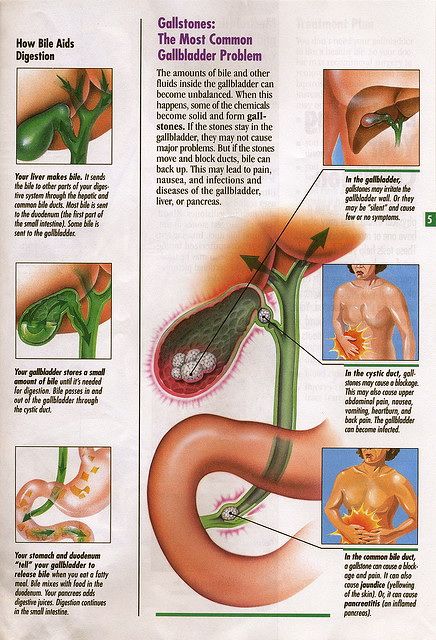 Its occurrence can be caused by several reasons.
Its occurrence can be caused by several reasons.
- Pebble stasis. One of the most important factors leading to cholecystitis. Pebble stasis is a violation of the flow of bile from the gallbladder, which develops as a result of the presence of gallstones, biliary fistulas, tumors, or other obstructions in the gallbladder.
- Infections. Cholecystitis can occur due to infections caused by E. coli, Klebsiella, Streptococcus, and others.
- Mechanical damage. Cholecystitis can be caused by trauma to the gallbladder or bile ducts due to various factors such as car accidents, falls, operations on the biliary tract.
- Nutritional factor. Eating fatty, fried, spicy foods, and drinking alcohol may contribute to the development of cholecystitis.
- Genetic factor. Having close relatives with cholecystitis may increase the risk of developing the disease.
Symptoms of cholecystitis
Cholecystitis is an inflammatory disease of the gallbladder.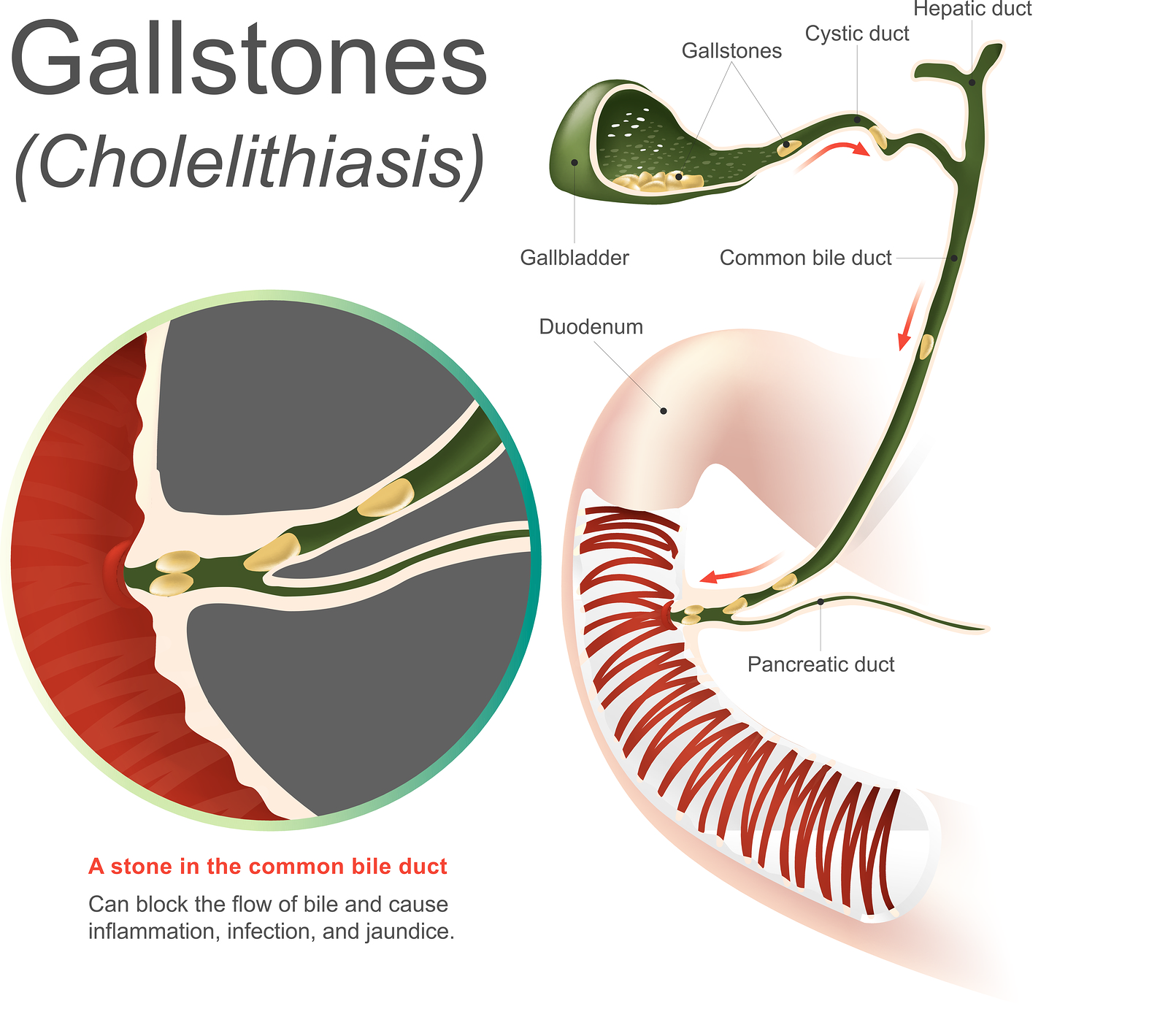 It can present with different symptoms depending on how severely the organ is affected.
It can present with different symptoms depending on how severely the organ is affected.
Main symptoms of cholecystitis:
- Acute pain in the right side under the ribs;
- Pain may last for several hours and is aggravated by movement and breathing;
- Body temperature, which can reach 38-39 degrees;
- Nausea and vomiting;
- Disorder of appetite;
- White coating on tongue;
- Diarrhea;
- Pain on palpation in the right side of the abdomen.
It is important to pay attention to these symptoms and consult a doctor for diagnosis and treatment. A missed moment can lead to complications and surgical intervention.
The main types of cholecystitis
Cholecystitis is an inflammatory disease of the gallbladder that can be caused by various causes. There are several types of this disease depending on the cause.
Exudative cholecystitis. It occurs when exudate forms in the gallbladder – a fluid that accumulates during inflammatory processes.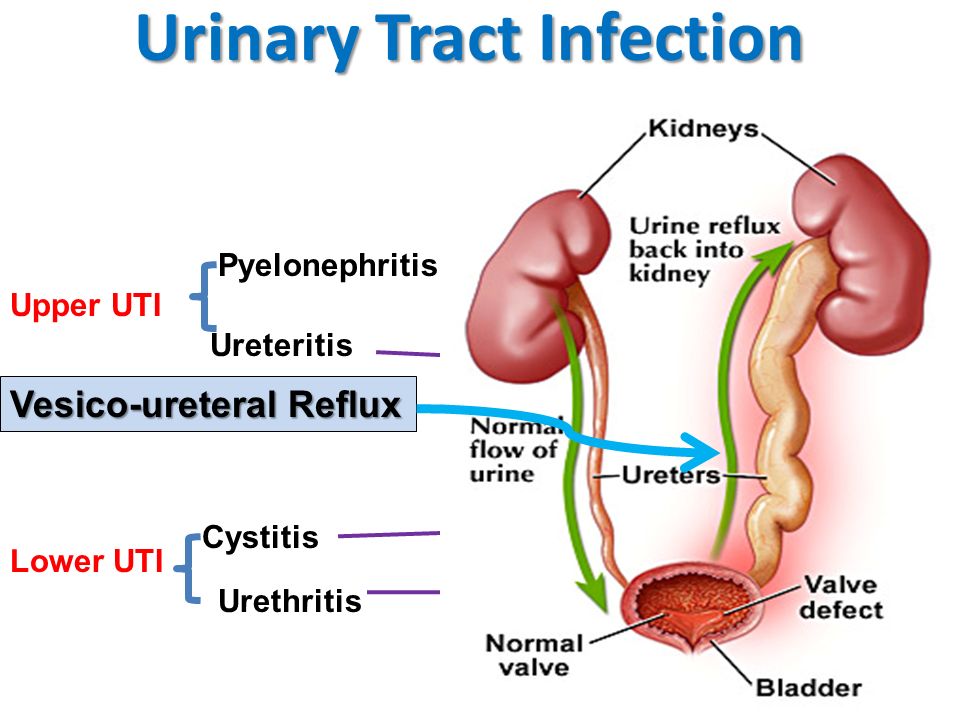 This form of cholecystitis is accompanied by severe pain, urinary retention, tachycardia.
This form of cholecystitis is accompanied by severe pain, urinary retention, tachycardia.
Calculous cholecystitis. Occurs as a result of the formation of gallstones. It is accompanied by sharp stabbing pains in the right hypochondrium, nausea, vomiting, fever.
Alaalic cholecystitis. Occurs when the blood supply to the gallbladder is disturbed. Its symptoms include severe pain in the right side of the abdomen, fever, and nausea.
Gangrenous cholecystitis. This type of cholecystitis occurs when the tissues of the gallbladder become infected. It is accompanied by severe pain in the right side of the abdomen, chills, fever.
Diagnosis of cholecystitis
Cholecystitis is a disease that is quite difficult to diagnose at the stage of its development. Often, these symptoms can occur with other disorders in the gastrointestinal tract. Therefore, to confirm the diagnosis, it is necessary to conduct a complex of medical studies.
In addition to ultrasound, if necessary, other studies are prescribed, such as blood for the level of leukocytes, a biochemical blood test, magnetic resonance imaging, radiography, etc. The set of studies depends on the symptoms and the medical diagnosis.
- Ultrasound of the gallbladder and liver is a mandatory diagnostic method;
- Blood for the level of leukocytes – helps to determine the presence of an inflammatory process;
- Biochemical blood test – examines the level of bile acids, indicators of intoxication of the body;
- Magnetic resonance imaging and radiography – prescribed in case of poor visibility of the gallbladder on ultrasound, as well as to assess the condition of neighboring organs.
The total number of tests that a doctor can order depends on the stage of the disease and the quality of the symptoms. It is necessary to follow all the doctor’s prescriptions and not delay contacting a medical institution in case of suspected cholecystitis.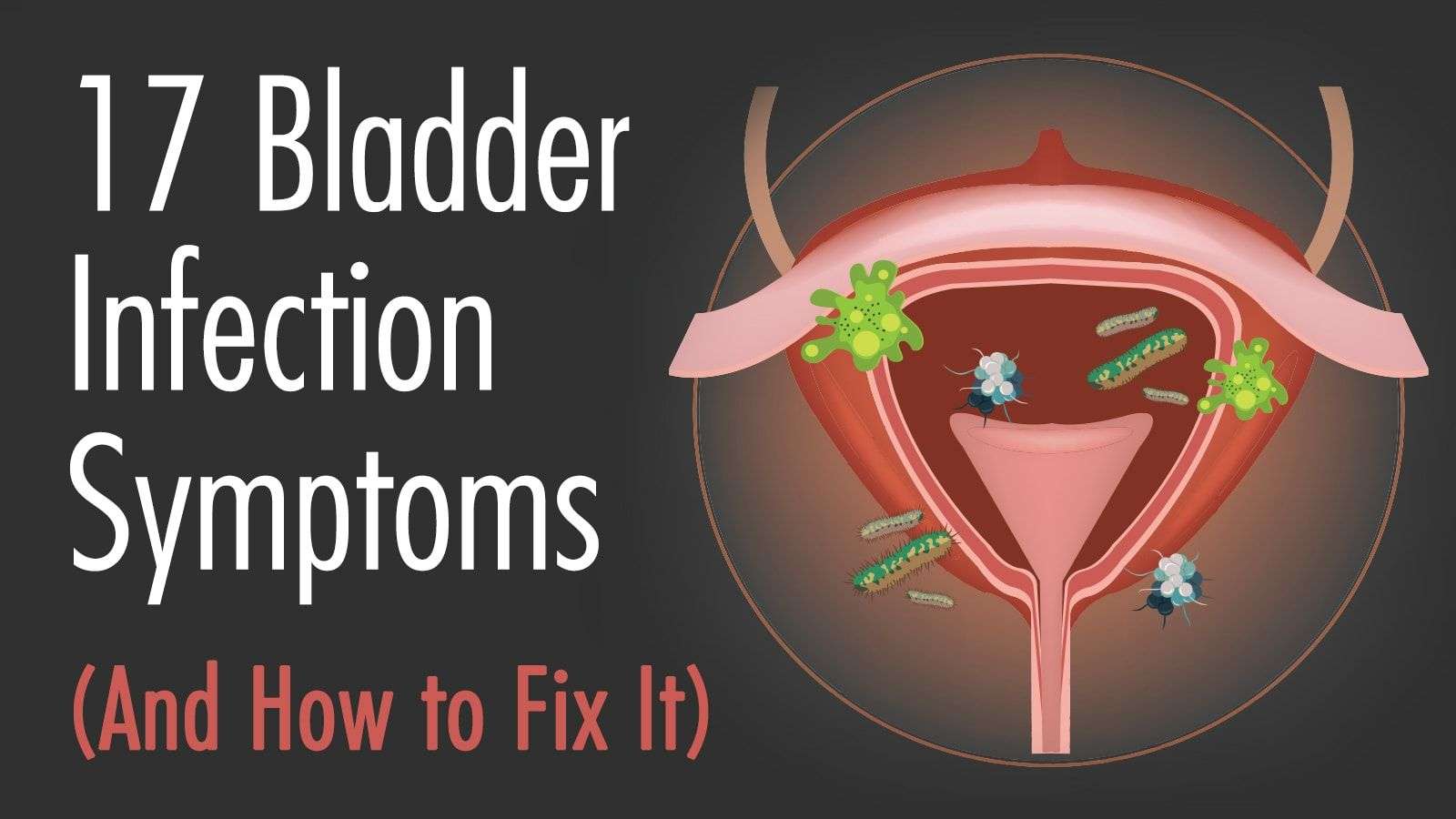 Cholecystitis can be cured, but only with timely medical attention.
Cholecystitis can be cured, but only with timely medical attention.
Treatment of cholecystitis
Drug treatment
Drug treatment of cholecystitis is aimed at relieving inflammation, pain and improving metabolic processes in the liver.
- antibiotics are given to fight infection and reduce symptoms.
- Anti-inflammatory agents help reduce inflammation of the gallbladder and blood vessels, improve metabolism and promote the excretion of bile.
- antihistamines help reduce the symptoms of an allergic reaction when cholecystitis occurs.
- Drugs that improve the contractility of the gallbladder , accelerate the excretion of bile and prevent its retention in the gallbladder.
Surgical treatment
Surgical treatment of cholecystitis may be required in case of severe and prolonged course of the disease, if there are dangerous complications.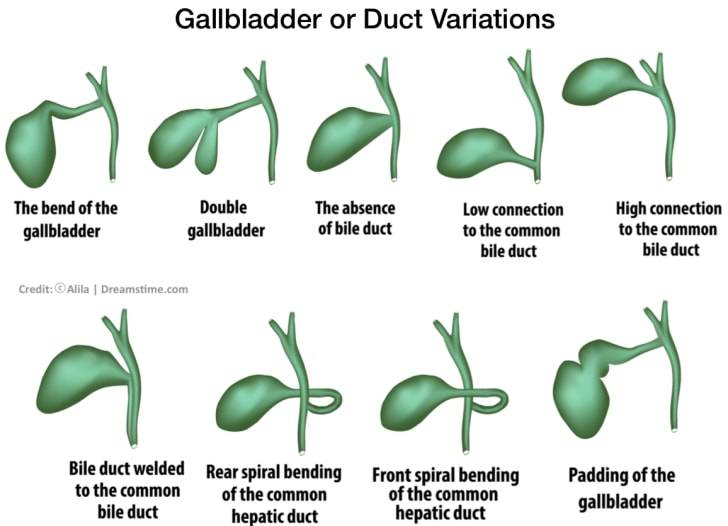 Surgery may be urgent, absolute, or delayed.
Surgery may be urgent, absolute, or delayed.
- Emergency surgery is required for gangrenous cholecystitis, gallbladder perforation and other acute complications.
- Absolute indication for surgery – frequent exacerbations of cholecystitis that are not amenable to conservative treatment.
- Delayed surgery is performed in the absence of acute inflammation of the gallbladder, but the disease continues for a long time and affects the quality of life of a person.
Prevention of cholecystitis
Prevention of cholecystitis is based on proper lifestyle and nutrition. Regular physical activity helps to avoid bile stasis, which can lead to the formation of stones and the development of cholecystitis. It is recommended to play sports, go for walks and actively spend leisure time in the fresh air.
If you have a tendency to cholecystitis, it is recommended to visit a doctor and undergo dispensary observation. You should also regularly undergo an ultrasound examination of the gallbladder and biliary tract in order to timely identify possible changes.
You should also regularly undergo an ultrasound examination of the gallbladder and biliary tract in order to timely identify possible changes.
- Follow the diet recommended by your doctor;
- Avoid overeating and eating large amounts of fatty, fried and spicy foods;
- Exercise and control your weight;
- Periodically undergo an ultrasound examination of the biliary tract;
- Seek medical attention at the first sign of illness.
Complications of cholecystitis
Cholecystitis is an inflammation of the gallbladder that can lead to severe complications. Complications can cause serious health problems and even death of the patient.
- Biliary peritonitis is the spread of inflammation to the abdominal cavity. In this case, the contents of the gallbladder penetrate into the surrounding tissue, causing infection and inflammation.
- Choledocholithiasis is a congestion of bile in the bile ducts due to the formation of stones.
 This is a serious complication that can lead to jaundice, infection, and sepsis.
This is a serious complication that can lead to jaundice, infection, and sepsis. - Pancreatitis is an inflammation of the pancreas caused by the flow of bile into the pancreatic duct.
- Sepsis is the spread of infection throughout the body through the blood. It can cause cardiac and respiratory arrest and lead to death.
If symptoms of cholecystitis are present, a physician should be consulted for diagnosis and treatment. Delayed care can lead to complications.
Cholecystitis in children and pregnant women
Cholecystitis is a disease associated with inflammation of the gallbladder. It can occur in adults and children of all ages, including pregnant women.
Cholecystitis in children
Cholecystitis in children can occur due to various causes, such as malnutrition, infections, allergies, heredity. The main symptoms of cholecystitis in children are abdominal pain, nausea, vomiting, and fever.
Children with cholecystitis often feel tired and lose their appetite. Typically, treatment for cholecystitis in children includes diet and drugs to help reduce inflammation.
Cholecystitis in pregnancy
Cholecystitis in pregnancy is a serious condition that can affect the health of the baby. Pregnancy can exacerbate the symptoms of cholecystitis, such as nausea, pain in the right upper quadrant of the abdomen, and tenderness in the spine.
Treatment for cholecystitis in pregnancy may include antibiotics and drugs to relieve pain. In some cases, surgery may be required.
If you are pregnant and experience signs of cholecystitis, see your doctor. He will help diagnose the disease and provide the necessary treatment.
The likelihood of recurrence of cholecystitis
Cholecystitis is a disease that is accompanied by inflammation of the gallbladder. Previously, this disease was considered a disease of the elderly, but today it is diagnosed not only in older patients, but also in young people. Cholecystitis can result from a variety of causes, such as fatty and unhealthy foods, metabolic disorders, the presence of gallstones, and other factors.
Cholecystitis can result from a variety of causes, such as fatty and unhealthy foods, metabolic disorders, the presence of gallstones, and other factors.
After a patient has had a first episode of cholecystitis, there is a high chance of recurrence. About 70% of patients experience this disease again within 5 years. A single case of cholecystitis usually carries a lower risk of developing serious complications, but more serious cases may require removal of the gallbladder. The only way to prevent relapse is through proper treatment and lifestyle changes.
- It is recommended to follow a diet that excludes fatty and spicy foods.
- It is important to maintain a healthy lifestyle, control your weight and exercise regularly.
- Need to avoid unnecessary stress, which can harm mental and physical health in general.
- Regular medical check-ups are important to keep track of your body and get rid of bad habits, including smoking and drinking.
Remember that even after successful treatment, it is important to continue to eat the right food and maintain an active lifestyle in order not to face a recurrence of cholecystitis.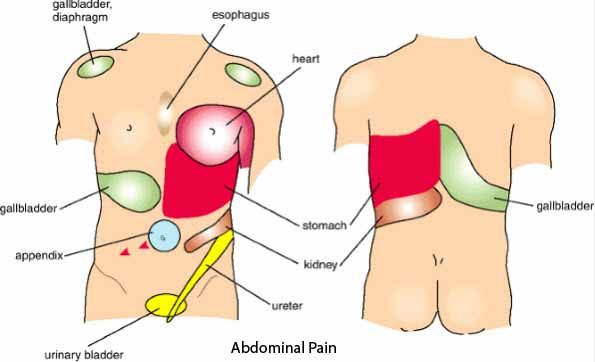
Related videos:
Q&A:
What is cholecystitis?
Cholecystitis is an inflammation of the gallbladder that can be acute or chronic.
What are the symptoms of cholecystitis?
The main symptoms of cholecystitis: pain in the right hypochondrium, nausea, vomiting, fever, abdominal pain.
How to determine the cause of cholecystitis?
Only a doctor can determine the cause of cholecystitis after a comprehensive examination of the patient. The most common causes are impaired bile supply, circulatory disorders, infectious diseases of the gallstone tract.
What diagnostic methods are used for cholecystitis?
For the diagnosis of cholecystitis are used: ultrasound, computed tomography, magnetic resonance imaging.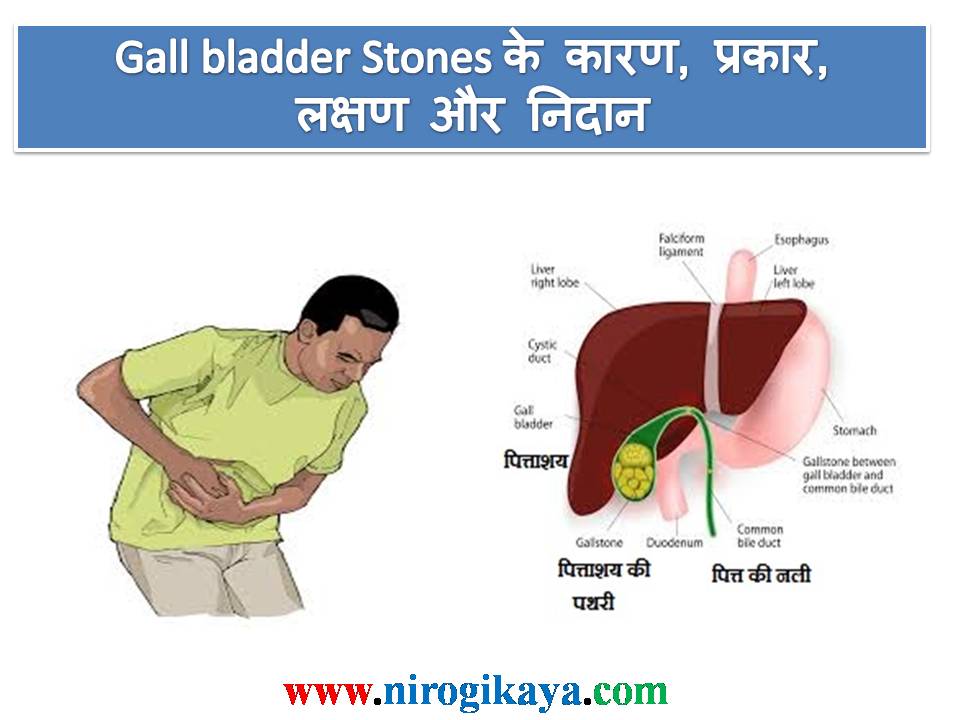
Can cholecystitis cause complications?
Yes, cholecystitis can lead to complications such as peritonitis, gallbladder abscess.
How is cholecystitis treated?
Treatment of cholecystitis depends on its form and cause. Most often, doctors use antibiotics, choleretic drugs. In some cases, surgery is indicated.
causes, symptoms and treatments
Contents
- 1 Large gallbladder, what to do?
- 1.1 Causes of the development of a large gallbladder
- 1.2 Genetic predisposition
- 1.3 Improper diet and lifestyle
- 1.4 Obesity and overweight
- 1.5 Hormonal changes
9 0005 1.6 Unexpected rupture of the bile duct
- 1.7 Major symptoms of a large gallbladder
- 1.8 Pain in the right hypochondrium
- 1.9 Dyspeptic disorders
- 1.10 Severe jaundice
- 1.11 Temperature syndrome
- 1.12 Treatment of large gallbladder
- 1.13 Drug therapy
- 1.
 14 Minimally invasive surgical technique
14 Minimally invasive surgical technique - 1.15 Laparoscopic gallbladder removal
- 1.16 Conservative treatment and regular monitoring
- 1.17 Biliary drainage
- 1.18 Related videos:
- 1.19 Q&A:
- 1.19.0.1 What causes an increase in the size of the large gallbladder?
- 1.19.0.2 What symptoms indicate problems with a large gallbladder?
- 1.19.0.3 How can an enlarged gallbladder be treated?
- 1.19.0.4 What are the possible complications of an enlarged gallbladder?
- 1.19.0.5 How can enlargement of the large gallbladder be prevented?
View recommendations and solutions for those with enlarged gallbladder. Learn the causes, symptoms, and possible treatments for a large gallbladder.
The large gallbladder is one of the main organs of the digestive system. It is a small organ located under the liver and serves as a temporary storage and concentration of bile, which is then released into the intestines for the breakdown and absorption of fat. Despite its compactness, a large gallbladder plays an important role in the process of digestion and its violation can lead to serious health problems.
Despite its compactness, a large gallbladder plays an important role in the process of digestion and its violation can lead to serious health problems.
Most gallbladder problems are usually caused by gallstones that can block the bile ducts and cause pain. Causes of stone formation can be varied, including disorders of cholesterol metabolism, elevated bile acids, or bacterial infections. Inflammation of the gallbladder, or cholecystitis, is one of the most common diseases associated with a large gallbladder. It often occurs due to stagnation of bile or blockage of the bile ducts by stones.
Symptoms of problems with a large gallbladder can range from mild to severe and include pain in the right upper quadrant of the abdomen, nausea and vomiting, feelings of fullness, and abdominal discomfort. Pain is often aggravated after eating fatty or fried foods. In the case of cholecystitis, there may be an increased body temperature and a feeling of pain on palpation of the abdomen. If you find these symptoms, you should consult a doctor for diagnosis and appropriate treatment.
If you find these symptoms, you should consult a doctor for diagnosis and appropriate treatment.
Treatment for problems with a large gallbladder may include conservative measures, such as changes in diet and lifestyle, and drugs that help dissolve stones. However, in some cases, surgery may be necessary to remove the bladder or stones from its interior. The decision on the choice of methods of treatment should be made by the doctor based on the results of the examination and the individual characteristics of the patient.
Causes of the development of a large gallbladder
The large gallbladder is one of the important organs of the digestive system responsible for storing and excreting bile into the intestines. The development of a large gallbladder can be due to various reasons, including:
- Gallstones: The formation of gallstones is one of the common causes of the development of a large gallbladder. Stones can form from cholesterol or bile pigments, and their presence can lead to obstruction of the bile ducts and cause a variety of symptoms.

- Inflammation of the gallbladder: Inflammation of the gallbladder, or cholecystitis, can also contribute to the development of a large gallbladder. Cholecystitis can be caused by infections, bile duct obstruction, or other factors, and leads to inflammation and enlargement of the bladder.
- Obesity: Overweight and obesity may be risk factors for the development of a large gallbladder. Excess body weight can lead to impaired metabolism and the functioning of the gallbladder.
- Hormonal changes: Some hormonal changes, such as during pregnancy or when using oral contraceptives, can contribute to the development of a large gallbladder. This is due to changes in estrogen and progesterone levels that affect the functioning of the gallbladder.
Knowledge of the underlying causes of the development of a large gallbladder is important to understand the processes that may contribute to its occurrence.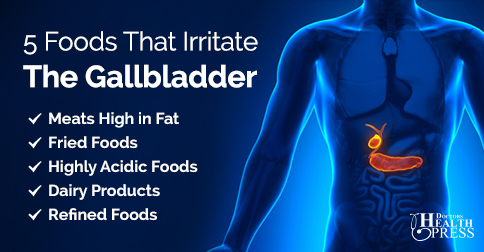 This can help develop appropriate strategies for the treatment and prevention of this disease.
This can help develop appropriate strategies for the treatment and prevention of this disease.
Genetic predisposition
Large gallbladder is an inherited disease in which there is an increased likelihood of developing the disease in people who have relatives with this disease. Genes may play an important role in the occurrence and development of a large gallbladder.
In some cases, a genetic predisposition may be associated with mutations in certain genes that control bile production and gallbladder function. These mutations can lead to gallbladder dysfunction and various gallbladder diseases.
Genetic predisposition to a large gallbladder can be inherited from parents to children. If one of the parents has a diagnosed disease of the large gallbladder, then their children are at increased risk of this disease. However, heredity is not the only reason for the development of a large gallbladder, so other risk factors must be considered.
Improper diet and lifestyle
Improper diet and lifestyle are the main factors that can lead to the development of a large gallbladder. Frequent consumption of fatty and high-calorie foods rich in animal fats contributes to the formation of gallstones. Eating large amounts of foods high in cholesterol can also lead to impaired bile acid metabolism and the formation of stones.
Frequent consumption of fatty and high-calorie foods rich in animal fats contributes to the formation of gallstones. Eating large amounts of foods high in cholesterol can also lead to impaired bile acid metabolism and the formation of stones.
Lack of fiber in the diet can also cause problems with a large gallbladder, since it is necessary for normal peristalsis and cleansing the body of waste and toxins. Optimal fiber intake can be achieved through the consumption of vegetables, fruits, whole grains, legumes and nuts.
A lifestyle disorder associated with a sedentary lifestyle can also contribute to the development of problems with a large gallbladder. Lack of physical activity slows down the metabolism and leads to the retention of fat in the body, which eventually leads to the formation of bladder stones. Regular exercise, including walking, running, swimming, or yoga, will help boost your metabolism and keep your gallbladder healthy.
In general, to maintain the health of the large gallbladder, it is important to maintain a healthy diet, including more vegetables, fruits and whole grains in the diet, while limiting the intake of fatty foods and foods high in cholesterol. You also need to be active and lead an active lifestyle in order to maintain a normal metabolism and prevent the formation of gallstones.
You also need to be active and lead an active lifestyle in order to maintain a normal metabolism and prevent the formation of gallstones.
Obesity and overweight
Obesity and overweight are one of the main causes of gallbladder problems. The accumulation of excess weight leads to a violation of the metabolism of bile acids and a decrease in their excretion. This can lead to slow movement of bile, its stagnation in the bladder and the formation of stones.
Obesity is also associated with an increase in adipose tissue in the body, including perivesical adipose tissue. This can lead to constriction and narrowing of the bile ducts, making it difficult for bile to flow out normally and contributing to the formation of stones.
To prevent problems with a large gallbladder, it is important to maintain a normal weight and avoid obesity. To do this, it is recommended to monitor the composition of the diet, reduce the intake of fats and carbohydrates, increase the intake of fiber, vegetables and fruits, as well as lead an active lifestyle and exercise regularly.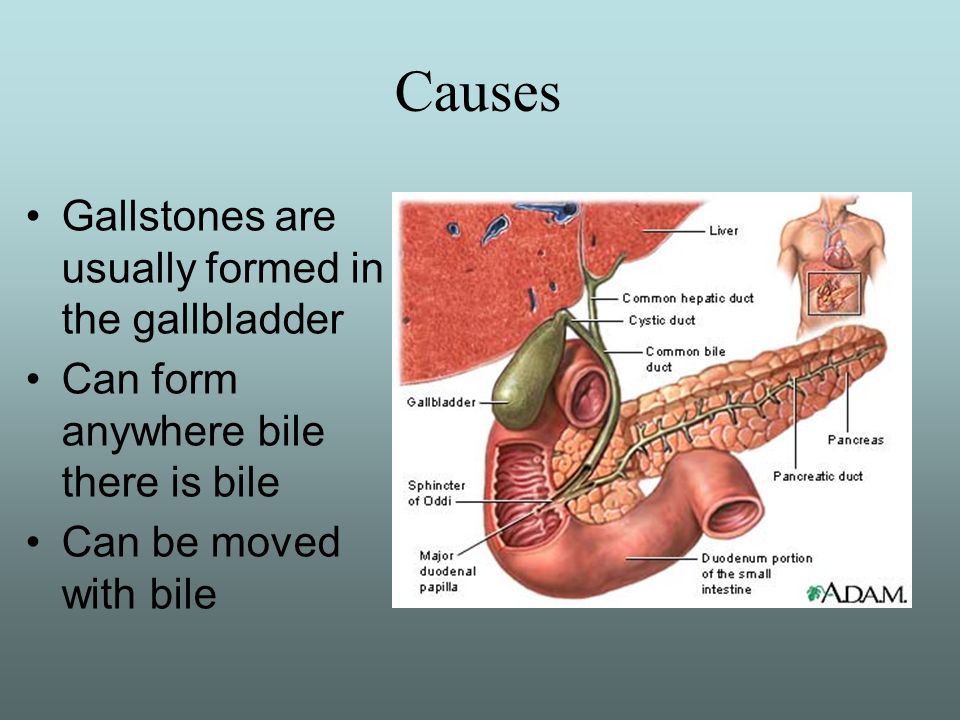
Hormonal changes
Hormones are substances produced by the organs of the endocrine system and play an important role in the regulation of various processes in the body, including the functioning of the gallbladder. Changes in hormone levels can lead to disruption of the bile system, including the large gallbladder.
One of the causes of hormonal changes that affect the functioning of the gallbladder is pregnancy. During pregnancy, the level of the hormone estrogen in a woman’s body rises significantly. Estrogens help relax the muscles of the gallbladder and increase its size, which can lead to difficult bile flow and the formation of stones.
Also, hormonal changes can be associated with various diseases of the endocrine system, such as polycystic ovary syndrome. In this disease, the level of hormonal disorders can be so significant that it leads to changes in the structure and functioning of the gallbladder.
Treatment options for hormonal changes in the gallbladder depend on the specific situation and the cause of the changes. Usually, doctors recommend complex treatment, including taking hormonal drugs, as well as changing lifestyle and diet.
Usually, doctors recommend complex treatment, including taking hormonal drugs, as well as changing lifestyle and diet.
Unexpected rupture of the bile duct
Unexpected rupture of the bile duct is a serious medical condition that requires immediate attention. This tear can be caused by a variety of factors, including trauma, gallbladder or liver disease, and bile duct dysfunction.
In the event of a bile duct rupture, bile that should normally flow from the gallbladder to the intestines can enter the abdominal cavity. This can lead to the development of acute abdominal syndrome, severe pain and other serious complications.
Symptoms of bile duct rupture may include acute pain in the right upper quadrant of the abdomen, severe deterioration in general condition, vomiting, jaundice and fever. If these signs appear, you should immediately consult a doctor for qualified medical care.
Treatment of a ruptured bile duct usually involves surgery to repair or remove the damaged portion of the bile duct.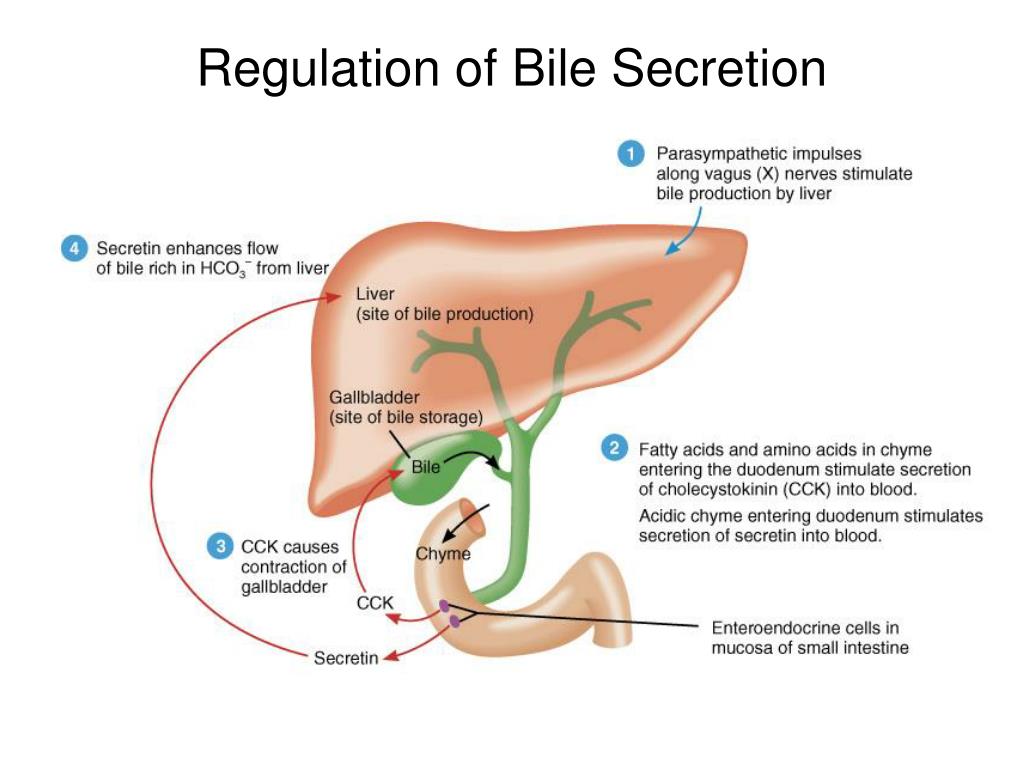 In some cases, a temporary stoma may be required to bypass the damaged area and adequately drain the bile.
In some cases, a temporary stoma may be required to bypass the damaged area and adequately drain the bile.
After surgery, the patient may require rehabilitation therapy, including diet, drug therapy, and exercise. Regular monitoring and adherence to the doctor’s recommendations will help prevent recurrent cases of bile duct rupture and maintain optimal functioning of the biliary system.
The main symptoms of a large gallbladder
1. Pain in the right hypochondrium: The main symptom of a large gallbladder is acute or paroxysmal pain in the right hypochondrium. They may be associated with fatty foods or physical activity and may be accompanied by nausea and vomiting.
2. Jaundice: a large gallbladder may cause jaundice in the skin and sclera of the eyes due to obstruction of the outflow of bile. Jaundice is manifested by a bright yellow skin tone, dark urine, and discolored stools.
3. Dyspepsia: a large gallbladder can cause various digestive disorders such as heartburn, bloating, belching, frequent bowel movements, constipation or diarrhea.
4. Gallstone: The presence of stones in the gallbladder can cause severe pain, especially when the stones move or block the bile ducts. This can lead to acute pancreatitis or choledocholithiasis.
5. Fever and infections: Occasionally, a large gallbladder can present a source of infection that can cause fever, chills, and general weakness.
6. Enlargement of the gallbladder: In some cases, a large gallbladder may increase in size due to bile stasis or inflammation of the gallbladder wall. Bladder enlargement can be determined by palpation of the abdomen or by ultrasound.
7. Other symptoms: In addition, a large gallbladder can cause symptoms such as general weakness, loss of appetite, biliary urticaria, or itchy skin.
Pain in the right hypochondrium
Pain in the right hypochondrium can be a sign of various diseases, including problems with a large gallbladder. One of the most common symptoms of gallbladder disease is a stabbing or sharp pain in the right hypochondrium. Pain may occur after meals, especially fatty or heavy foods, and may be accompanied by nausea or vomiting.
One of the most common symptoms of gallbladder disease is a stabbing or sharp pain in the right hypochondrium. Pain may occur after meals, especially fatty or heavy foods, and may be accompanied by nausea or vomiting.
In addition to the large gallbladder, pain in the right hypochondrium may be associated with other problems, such as the liver, pancreas, or intestines. The liver is an important organ involved in the processing and storage of nutrients, and disease can cause pain or discomfort in this area.
Pain in the right hypochondrium can also be caused by gallstones or inflammation. Stones can block the bile ducts and cause severe pain. Inflammation of the gallbladder, known as cholecystitis, is usually caused by an infection and can cause severe or paroxysmal pain in the right hypochondrium.
If you experience pain in the right hypochondrium, especially if it is accompanied by other symptoms such as jaundice, fever or loss of appetite, it is important to see a doctor for diagnosis and appropriate treatment.
Dyspeptic disorders
Dyspeptic disorders is a group of symptoms associated with indigestion in the gastrointestinal tract. These symptoms may include a feeling of heaviness or discomfort in the abdomen, heartburn, bloating, vomiting, nausea, diarrhea, or constipation.
With a large gallbladder, dyspeptic disorders can be caused by indigestion of fatty foods. Under normal conditions, bile from the gallbladder is secreted into the intestines during meals and helps break down fats. However, in the presence of a large gallbladder, the volume of bile secreted may be insufficient, which leads to indigestion and the occurrence of dyspeptic manifestations.
To improve digestion in dyspeptic disorders, it is recommended to follow a diet that excludes fatty and fried foods, spicy and spicy foods, carbonated drinks, and alcohol. It is also helpful to eat small meals often, eat slowly, and chew your food well. To improve digestion, you can use enzyme preparations and probiotics, which will help break down food and improve the functioning of the digestive tract.
Severe jaundice
Severe jaundice is a serious condition in which the skin and sclera of the eyes turn an intense yellow color. It occurs due to a violation of the metabolism of bile pigments and indicates the presence of problems with the biliary system.
The main cause of severe jaundice is gallbladder disease such as cholecystitis, cholelithiasis, or cancer. It can also occur with obstruction of the bile ducts or pathologies of the liver.
Symptoms of severe jaundice may include severe weakness, loss of appetite, nausea and vomiting, itchy skin, dark urine and light stools. Patients with intense jaundice may also have tenderness in the right hypochondrium or in the liver region.
For the diagnosis of intense jaundice, laboratory tests and instrumental methods, such as ultrasound of the biliary tract and needle biopsy of the liver, are carried out. Treatment depends on the underlying condition and may include medication, surgery, or blood purification procedures such as hemodialysis.
Temperature syndrome
Temperature syndrome is one of the most common symptoms associated with a large gallbladder. With this syndrome, the patient experiences an increase in body temperature, which may indicate the presence of an inflammatory process.
The main causes of temperature syndrome are infectious diseases such as cholecystitis or pancreatitis. An increase in temperature can be caused by the formation of an infectious focus in the gallbladder area. In some cases, in the presence of an acute form of cholecystitis, the temperature can reach critical values and require urgent hospitalization.
To determine the cause of a rise in temperature, it is necessary to consult a doctor and undergo a comprehensive examination. Usually, the doctor prescribes laboratory tests, such as a general blood and urine test, as well as an ultrasound of the gallbladder to rule out problems with the glandular organ. If an infection is detected, the patient is prescribed antibiotics and other drugs aimed at combating the inflammatory process and increasing immunity.
To prevent the development of temperature syndrome and related problems, it is recommended to lead a healthy lifestyle, avoid overeating and eating fatty and spicy foods. It is also important to regularly undergo medical examinations and monitor your condition. At the first sign of fever and discomfort in the gallbladder area, you should consult a doctor for qualified assistance.
Treatments for large gallbladder
1. Drug treatment:
Various drugs can be used to treat large gallbladder. Some of them are aimed at breaking stones in the bladder and preventing their formation. Other medications can help reduce inflammation and pain symptoms associated with the disease.
2. Surgical intervention:
If conservative treatment does not lead to positive results or if complications are threatened, surgical removal of the large gallbladder may be recommended. This can happen both through traditional surgery and through a laparoscopic procedure.
3. Extracorporeal Shock Wave Lithotripsy:
This is a minimally invasive procedure that uses shock waves to break up gallstones in air or liquid. This procedure may be recommended when stones cannot be removed by pharmacological means or when there are contraindications to surgery.
4. Shipment of stones:
Sometimes, if the stones are small enough, they can be removed from the gallbladder with drugs that dissolve the stones or help them move to the intestines.
5. Lifestyle and dietary changes:
In some cases, lifestyle and dietary changes can help reduce symptoms and prevent new stones from forming. For example, avoiding fatty and fried foods, taking long breaks between meals, and increasing physical activity are recommended.
6. Prophylactic treatment:
In patients with a history of large gallbladder problems, prophylactic medications may be recommended to prevent new stones from forming and keep the gallbladder functioning normally.
Drug therapy
Drug therapy is one of the main treatments for a large gallbladder. The goal of drug intervention is to relieve symptoms, improve gallbladder function, and prevent stone formation.
One of the main drugs used to treat a large gallbladder are cholagogues. They improve the peristalsis of the biliary tract and promote the secretion of bile. Herbal preparations such as milk nut and agrimony are often used.
Analgesics such as nemastin and paracetamol may be used to relieve pain. They help reduce inflammation and reduce pain.
Some patients who have increased acidity of bile may be recommended antacids, which help to normalize the acidity and improve the flow of bile.
In addition, your doctor may prescribe medications to break down or dissolve gallstones. However, these methods may have side effects and require careful monitoring by a physician.
Minimally Invasive Surgery
Minimally Invasive Surgery is used to treat a large gallbladder. This method allows the operation to be performed with minimal tissue damage, which reduces the risk of complications, shortens the rehabilitation time and speeds up the patient’s recovery process.
This method allows the operation to be performed with minimal tissue damage, which reduces the risk of complications, shortens the rehabilitation time and speeds up the patient’s recovery process.
One popular minimally invasive procedure is laparoscopy. During this procedure, the surgeon makes several small incisions in the patient’s abdomen and inserts a laparoscope, a special thin tube with a video camera. With the help of a laparoscope, the surgeon controls the progress of the operation and removes the large gallbladder through small incisions.
The advantages of a minimally invasive technique for the treatment of a large gallbladder are clear. It avoids a large incision in the abdomen, which reduces the risk of infections and scarring. In addition, the operation is carried out in the shortest possible time, which allows the patient to quickly return to normal life.
Despite all the benefits, minimally invasive surgery is not suitable for all patients. Some cases require more complex surgeries, which may be necessary if there are large gallstones or other complications. Therefore, before making a decision on the method of treatment, it is necessary to conduct a thorough examination and consultation with a specialist.
Therefore, before making a decision on the method of treatment, it is necessary to conduct a thorough examination and consultation with a specialist.
Laparoscopic gallbladder removal
Laparoscopic gallbladder removal, also known as cholecystectomy, is one of the most common surgical procedures in the treatment of gallbladder disease. This procedure is performed using a laparoscope, a device with a camera placed on a flexible tube that is inserted through small incisions in the abdomen.
Laparoscopic gallbladder removal is preferred over open surgery due to its advantages. The operation is usually faster, causes less pain and discomfort after surgery, has a lower risk of complications, and a faster patient recovery.
The procedure for laparoscopic gallbladder removal begins with the introduction of gas into the abdomen, which inflates it and creates space for the laparoscope to operate. The surgeon then makes small incisions and inserts a laparoscope and instruments to remove the bladder. The gallbladder is detached from the liver and bile ducts, then removed through one of the incisions.
The gallbladder is detached from the liver and bile ducts, then removed through one of the incisions.
After surgery, patients are advised to:
- Eat a diet free of fatty and spicy foods to reduce the load on the liver and facilitate digestion.
- Increase dietary fiber intake to prevent constipation.
- Avoid strenuous exercise and heavy lifting for several weeks after surgery.
- Gradually return to normal physical activity after consulting your doctor.
Laparoscopic gallbladder removal is generally considered a safe and effective procedure. However, like any surgery, it can have risks and complications such as infection, bleeding, and injury to surrounding tissues. Patients should discuss all possible risks and side effects with their doctor before undergoing surgery.
Non-surgical treatment and regular monitoring
Non-surgical treatment of a large gallbladder may be recommended when the patient is asymptomatic or when the risks of surgery outweigh the benefits. Such treatment usually includes changes in lifestyle and diet.
Such treatment usually includes changes in lifestyle and diet.
In cases where symptoms are not severe and do not affect quality of life, regular monitoring may be preferable to surgery. Your doctor may order regular check-ups and tests to evaluate your gallbladder and its function.
With conservative treatment, a special diet may be prescribed to limit the intake of fatty foods and foods that promote stone formation. It is also possible to prescribe medications that will help improve the contraction of the gallbladder and prevent the formation of new stones.
Patients are advised to stop smoking, exercise regularly and maintain a healthy lifestyle. It is also important to watch your weight and avoid spicy and fatty foods, as these factors can contribute to the formation of gallstones.
Biliary Drainage
Biliary Drainage is a procedure performed to relieve the symptoms and treat diseases of the biliary tract. It is carried out by introducing a drainage tubular instrument into the gallbladder or bile ducts.
During the biliary drainage procedure, various methods of introducing the drainage system can be used, including percutaneous drainage, endoscopic drainage, and surgical drainage.
Biliary drainage is used to remove gallstones, relieve jaundice, relieve obstruction and improve biliary tract patency. This procedure can also be used as a preliminary preparation for surgery if there is a need to remove the gallbladder, tumor or other pathological formations.
After a biliary drainage procedure, observation and replacement of the drainage instrument may be required for several days or weeks. It is important to follow the doctor’s recommendations and monitor the condition of the disease after the procedure.
Related videos:
Q&A:
What causes an increase in the size of the large gallbladder?
An increase in the size of the large gallbladder can be caused by various reasons.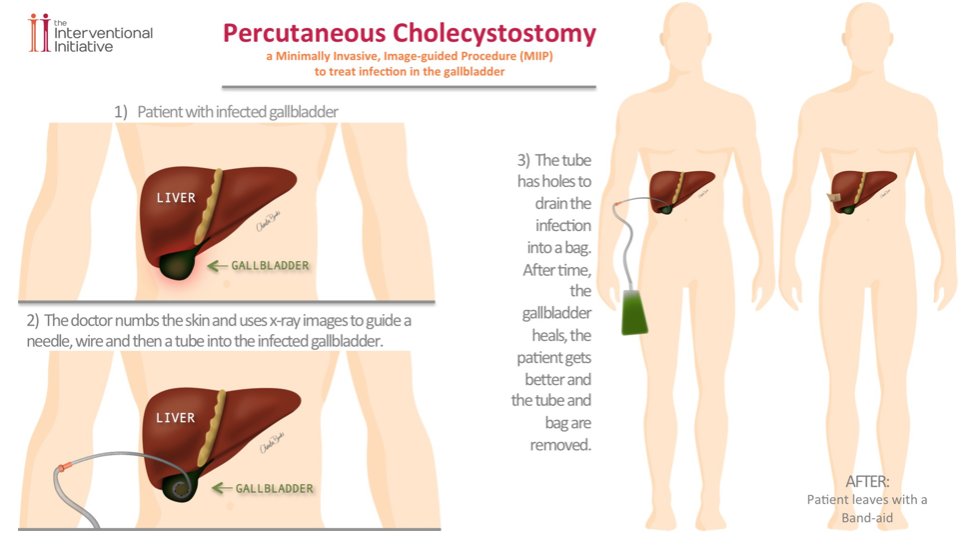 One of the most common causes is the formation of stones that block the flow of bile from the bladder. Also, an increase in the size of the bladder may be associated with inflammatory processes, infections and tumors.
One of the most common causes is the formation of stones that block the flow of bile from the bladder. Also, an increase in the size of the bladder may be associated with inflammatory processes, infections and tumors.
What symptoms indicate problems with a large gallbladder?
Large gallbladder problems can present with various symptoms. The most common symptoms include pain in the right hypochondrium, an unpleasant feeling of heaviness or fullness in the abdomen, nausea, vomiting, lack of appetite, heartburn, increased fatigue and general weakness.
How can an enlarged gallbladder be treated?
Treatment for an enlarged gallbladder depends on the cause of the condition. In the case of formation of stones, it may be necessary to remove the stones surgically or lithotripsy – the destruction of stones using ultrasonic waves. If the increase in the size of the bladder is associated with inflammatory processes or infections, then anti-inflammatory and anti-infective drugs are prescribed.

 [Acute Cholecystitis]. Zentralbl Chir. 2018 Aug;143(4):392-399. [PubMed: 30134498]
[Acute Cholecystitis]. Zentralbl Chir. 2018 Aug;143(4):392-399. [PubMed: 30134498]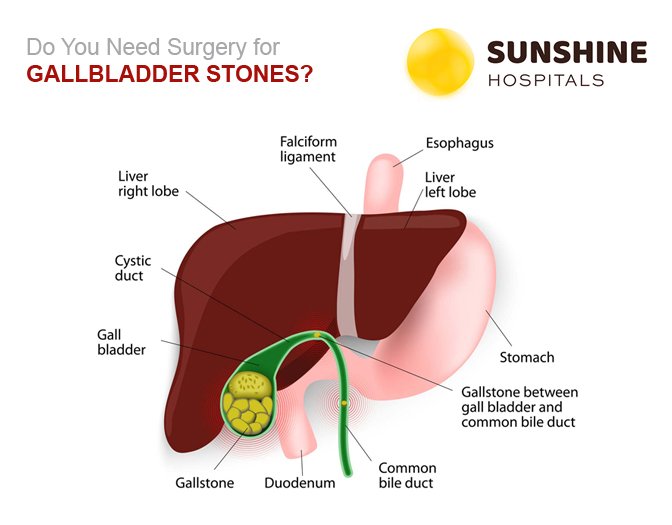 Acute cholecystitis. BMJ Clin Evid. 2014 Aug 20;2014 [PMC free article: PMC4140413] [PubMed: 25144428]
Acute cholecystitis. BMJ Clin Evid. 2014 Aug 20;2014 [PMC free article: PMC4140413] [PubMed: 25144428] Emerg (Tehran). 2018;6(1):e19. [PMC free article: PMC6036519] [PubMed: 30009221]
Emerg (Tehran). 2018;6(1):e19. [PMC free article: PMC6036519] [PubMed: 30009221] Am J Emerg Med. 2019 Jan;37(1):61-66. [PubMed: 29724580]
Am J Emerg Med. 2019 Jan;37(1):61-66. [PubMed: 29724580] 2018 Apr;32(4):1627-1635. [PubMed: 29404731]
2018 Apr;32(4):1627-1635. [PubMed: 29404731]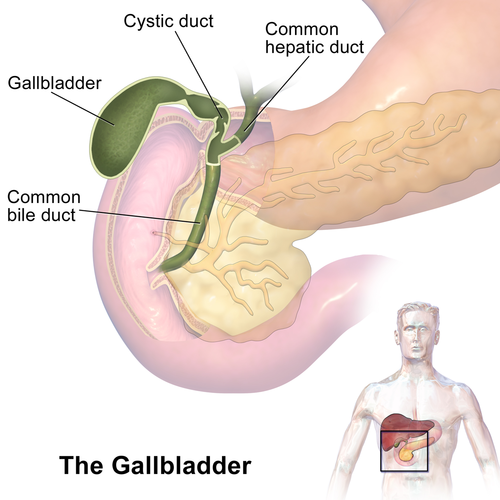 Pregnant women or people on hormone therapy are at greater risk.
Pregnant women or people on hormone therapy are at greater risk.
 10 Complications of cholecystitis
10 Complications of cholecystitis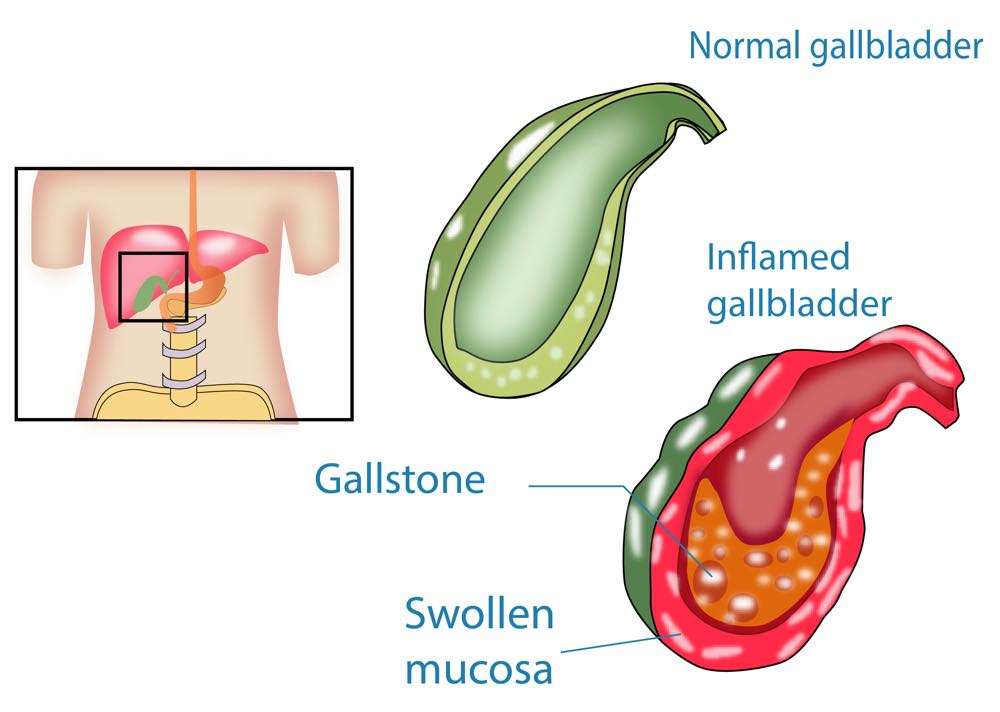 This is a serious complication that can lead to jaundice, infection, and sepsis.
This is a serious complication that can lead to jaundice, infection, and sepsis. 14 Minimally invasive surgical technique
14 Minimally invasive surgical technique